Author & Photographer: George Mitchell
Our recommendations are not influenced by affiliate links – we have none. Our content and advice is derived from our personal experience and knowledge based on spending five months in Thailand as well as travelling three-years Round-The-World.
Why You Should Do the “Become a Local” Walk
What are the best places to see local people and experience Thai Buddhist culture? This walk avoids the places most people go to based on name recognition. This post focuses on the best places to see everyday life, learn about Thai traditional culture, and shop for authentic arts and crafts.
The Best Places to See in Bangkok
The best places to see in Bangkok are described in four posts. Your four day itinerary should include:
- Day 1 – you should Not Miss Wat Phra Kaew.
- Day 2 – you should see the Bangkok National Museum, Wat Pho, and Wat Arun.
- Day 3 – you should see the Less Visited Gems overlooked by most tourists.
- Day 4 – (this post) you could see Erawan Shrine, Jim Thompson House, Suan Pakkad, Ice Cream, Thai Craft Shopping, Lumphini Park, Queen Sirikit Park, Chatuchak Weekend Market, and a Floating Market.
As some people may only allow four days for Bangkok, I have listed all the remaining sights in the fourth post. However, this could easily take two or more days, especially if you like to spend a lot of time shopping.
Bangkok Map
All points of interest in this post can be found on our custom Bangkok Google map and are suffixed by their Google Rating (G0 to G5). Anything rated >= 4.0 is very good; >= 4.4 is excellent.
The points of interest for this post are in the Day 4 Layer (you can show/hide the other layers by clicking each check box on and off).
Lumphini Park
On our first trip, we found Lumphini Park (G4.5) to be disappointing due the lack of interesting vegetation. It was a great place to see average people. Women carried pots of food hanging from a plank resting on their neck. Corinne had noodles with bean sprouts. There were all kinds of open air classes on sewing, macrame, et al.
Then everything changed. A pretty, petite woman saw Corinne’s long blond hair. The hairdressing instructor asked if Corinne would be a subject for her hairdressing class. She was teaching her students to do French braids.
Corinne loved the end result. She said it was a good style for hot climates.
Getting to Erawan Shrine and Other Sights
Generally in Bangkok, we walk to our next destination if it is close enough. The traffic is horrendous so we shunned tuktuks in central Bangkok. To avoid long walks, we used to take the air-con buses — they cost more but were less crowded. For places that are near a rail station, we use the Skytrain or MRT subway. Erawan is one of those places, located right below the Skytrain.
Erawan Shrine
On the way to Jim Thompson House, stop at the Erawan Shrine (G4.6) covered in the Bangkok — Less Visited Gems post. This gives you an extra chance to see interesting things and fascinating people.
People were buying marigolds, lighting incense, or offering fruits. Why are there so many marigolds? Marigolds have been part of Indian culture for centuries. These bright flowers are associated with Lakshmi, the goddess of wealth and prosperity. Lakshmi is the consort of Vishnu.
Indian ceremonies and culture were adopted during the Indianization of SE Asia period. Marigold garlands are commonly seen in temples and houses. The saffron colour of marigolds represents courage and sacrifice.
While it is easy to notice the mirror like glass mosaic pavilion, take a closer look at the details around you. Phra Phrom has four faces representing the four directions. Each face also represents a different aspect of life that you can pray for better luck: work, romance, money and health/family. Mala (prayer beads) symbolize time as well as ward off evil. The vertical multi-coloured Sruva (ladle), which looks like a sceptre, is used to offer ghee to the sacrificial fire. The water pot symbolizes purity and cleanliness.
Erawan Shrine Traditional Dancing
The best reason to visit Erawan Shrine again is that you do not know when someone will pay for a ceremony that includes traditional Thai dancers and musicians. The graceful classical dancers perform in bare feet.
Thai culture adopted Hindu marriage and ordination ceremonies, dancing and literature. The shrine often features performances by Thai dance troupes who are hired by worshippers in return for seeing their prayers answered at the shrine.
Erawan Shrine Address and Hours
Address: 494 Thanon Ratchadamri, corner of Phloen Chit Rd
Open: 0800 to 1700 hrs. ??
Entry Fee: Free
Directions: Walk from Lumphini Park, 2 km north to Ratchadamri
Jim Thompson House
While Jim Thompson House (G4.4) is well known, there were not that many visitors. Tour groups are not allowed. While it is a bit expensive, the entry does include a guided tour. We went on them twice as they were very good. It was here that we learned that the spirit house must be built first before the house and that the house must never cast a shadow on the spirit house.
Six original teak houses were moved here and joined by a boardwalk. Jim Thompson was an architect and he designed his own property. The houses were primarily moved from the Ayutthaya area. He followed Thai traditions such as not painting the teak walls. However, to protect the teak wood, he painted the exterior with dull red creosote, which was introduced from England.
Outside is a lush garden of various plants and trees to simulate a Thai jungle. The grounds have a shop and a restaurant as well as a garden. I believe you can roam around at no cost and without a guide.
Jim Thompson Silk
Thompson was a pre-CIA spy during World War II. After the war, he returned to Thailand and revived the Thai silk industry. The House does frequent presentations and has some posters explaining the silk process.
First they showed us trays of silk worms feeding on mulberry leaves. They only live 20 to 25 days in this form. Larvae keep chomping on leaves and grow nearly 10,000 times larger within a few weeks! They are filled with liquid silk from digested mulberry leaves. They excrete these liquid proteins that resemble hair and build their cocoons in 2 to 3 days.
Here they showed us what silk cocoons looked like. They transform in ca. 14 days to moths to lay eggs to create future silk worms.
A man placed the cocoons in warm water to remove the gum coating and loosen them. The trick is to find the end of the thread and unravel the silk filament onto a spindle (called reeling). The thread is then cleaned and bleached to purify it.
According to Chinese tradition, Empress Léi Zǔ discovered sericulture in the 27th century BC. It was kept secret for centuries by the Chinese and was the original cause for the Silk Trade Routes. It takes 8750 cocoons to make one kg of silk! Today, six to eight cocoons are unravelled simultaneously so the threads are intertwined for greater strength.
A solo dancer did a traditional dance but wore a Thompson silk dress rather than the ornate costumes at the Erawan Shrine. One kg of silk can produce 14 metres (yards) of lightweight silk!
Jim Thompson provided the silk for all the costumes used in the 1951 movie production of The King & I. This introduced Thai silk to world markets.
Jim Thompson Art and Antiques
Thompson made a fortune and began collecting art and antiques. It is well worth exploring his collection. His six houses were opened to the public after Thompson disappeared mysteriously in the famous Cameron Highlands in Malaysia.
Everything has been kept as Thompson left it. However, Thompson built the house as if it was a museum providing backlit alcoves to display special sculptures. The most photogenic artifacts were placed in backlit niches. The former antique collector had a good sense of beauty.
However, the low light was challenging for my camera in that era. This seems to be a small sculpture of two kinnaris. They are part human and part bird, and have a strong association with music and love. The kinnaris dwell in the Himavamsa Forest according to Hindu and Buddhist mythology.
The so-called Standing Buddha is a Tai creation and did not exist in India as a canonical type.
We bought prints of the paintings in the Chandler Room. These paintings were usually done by anonymous priest-painters to make merit. They were made to inspire parishioners. Most are mid-19th century paintings of the Jataka stories of previous incarnations of the Buddha.
One of the most popular stories is about Prince Vessantara, who was banishing my his meddling step-mother. He is shown in this painting reuniting with his father, King Sanjaya, and family. No facial expressions are used in this art. It depicts them weeping with joy at being reunited by the use of the symbolic gesture of the right hand curved over the eye. Note, the elegant frame of leaves and flowers that surrounds the painting.
This beautiful carved wood door is assumed to be Manjushri (an incarnation of Buddha). In one hand, he carries a vajra (thunderbolt) sword, which cuts through ignorance and discrimination. In the other hand, he holds a lotus bloom.
Mah Jong tables that originally belonged to King Rama V are used as dining tables! They are set with beautiful blue and white Chinese porcelain from the Ming Dynasty (13th to 17th C). Some items were found in the river that came from sunken boats!
Jim Thompson also loved Chinese blue and white porcelain, especially from the Yuan period (1271-1368). This Mongolian-led dynasty was responsible for maintaining the peace and supporting trade along the Silk Routes. This was the era of Marco Polo.
The door lintel holds a beautifully carved board with fish.
One narrow room was filled solely with Thai Benjarong ware, which is painted with five colours of enamel, fired one colour at a time. In the bedroom were beautiful mother of pearl inlay and silverware boxes. Everything was given some space so it did not feel cluttered.
The only noise and smell is the occasional boat going down the Klong (canal) Maha Nag. Across the klong, people still make silk. Definitely walk many klong in Bangkok. It gives you a glimpse of what Krung Thep used to look like. These were the main streets of ancient times.
Jim Thompson House Address and Hours
Address: 6 Soi Kasemsan 2
Open: 1000 to 1800 hrs. but last guided tour starts at 1700 hrs. Tours are provided in English, French, Japanese, Chinese and Thai.
Entry Fee: BHT 200
Directions: Take Sky Train to National Stadium station exit #1
Websites: Jim Thompson House
Jim Thompson House Art Collection post shows many photos of the beautiful artifacts in the house
Suan Pakkad Palace
Suan Pakkad (G4.5) means cabbage patch, the original purpose of this plot of land. It consists of a set of traditional Thai houses brought here in 1952 by Prince Chumbhot. It was turned into a museum after his death. The elegant gardens provide a peaceful setting.
Suan Pakkad Ban Chiang Pottery
The ground floor is open and the house is actually on the second floor. Houses were built on stilts to avoid flooding. The houses are linked by bridges.
House #8 has a collection of pottery and necklaces from prehistoric Ban Chiang. The pottery has distinctive red motifs on a buff background.
The Ban Chiang archaeological site dates from 1500 to 900 BC. This pottery is older than Ancient Greece.
Celadon is pale green-glazed pottery that originated in China. The green tone is imparted by adding iron oxide. Tiny cracks is a feature of this stoneware. The Celadon name originates from a seventeenth century French novel.
This Khon mask is green with human features and a conical crown of royalty, so it represents a hero like Rama. Rama is a human avatar of the Hindu god Vishnu, the Preserver.
Suan Pakkad Lacquer Pavilion
The Lacquer Pavilion was the most exciting place in the museum. This unique building preserves 12 gold on black lacquerware mural paintings. The Lacquer Pavilion was found in a small riverside village ca. 10 km south of Ayutthaya. It was assumed that the building dated back to the Ayutthaya Period because of the use of a pointed arch in the windows and the inclusion of three figures in seventeenth century French costumes typical of the reign of King Narai (1656–1688).
However, recent research has challenged this theory. The Lacquer Pavilion features gold-leaf Jataka scenes in the upper level and Ramakien in the lower level. The clincher is that the episodes of the Ramakien are from the version composed by King Rama I in 1785. This means the pavilion dates to late eighteenth century.1
1 The Lacquer Pavilion in its First Reign Context, Patricia M. Young, Journal of the Siam Society 2004
Suan Pakkad Lanna Artifacts
Lanna are the tribal people that formed an ancient kingdom in the Chiang Mai area. Lanna women kept their cloth dye formulas a secret. They were extracted from bark, roots, seeds and flowers shown in bottom left tray. The saffron coloured monks robes were made from jackfruit. Red dyes came from the resin of the lac insect. Tamarind juice, bark ash, and dung were used to fix the dyes!
Lanna believe there are 32 spirits or khwan that affect one’s health. Imbalance in one’s body implies that the good spirits went away. The baisri offering of sticky rice (khao niao), fruits, and eggs is used to call back the spirits. It is decorated with banana leaves and beautiful red flowers. It is a work of art.
The carved Ham Yon (literally meaning testicles magic diagram) plaque hangs over the bedroom door. It is a talisman of the ancestral spirits. Those of a “different spirit” (clan) must ask the ancestors for permission to enter these private rooms. It is replaced every time the male head of the house changes.
Every evening, the daughter of the house would sit on the verandah and receive male suitors. The young men would sing love songs on a pin-pia instrument. Courtship etiquette was strict and no physical contact was allowed. To express affection, the girl would offer cigars, pickled tea, areca nuts, and betel leaves. The trays are actually Burmese or hill tribe-style red lacquerware.
Betel nut is the seed of the fruit of the areca palm. Betel nut is a stimulant drug, which means it speeds up the messages travelling between the brain and the body. Betel nut chewing is an important cultural practice. Mouth ulcers and gum disease, heart disease, and cancer. It stains the teeth red.
Perhaps the best Thai traditional dancers we ever saw was at the Suan Pakkad Palace. Both the men and women dancers are very pretty with feminine features. They do not mention offering dancers on their web site.
Suan Pakkad Palace Address and Hours
Address: 328/1 Soi Si Ayutthaya 3
Open: 0900 to 1600 hrs.
Entry Fee: THB 100
Directions: take sky train to Phayathai Station and walk 5 minutes
Website: The Suan Pakkad Palace
Ice Cream
On our first two trips to Bangkok, we would often go for ice cream to cool down. Our go-to place Foremost (Phloen Chit) seems to have disappeared. I have listed ice cream places recommended by other web sites on the Bangkok Map, but we haven’t been to them. However, the Google Map ratings were very high. What we do recommend is to try flavours unique to Thailand, such as tangerine tango and jackfruit.
Thai Craft Shopping
If you want to but a Thai souvenir avoid touristy goods made in other countries. Instead buy the best arts and crafts that are made in Thailand. Generally, these are made by the Hill Tribes.
Stalls at Wats
You need to know the value of various crafts before you buy at a stall. It is best to explore some of the craft stores with fixed and reasonable prices to learn the values of the different crafts.
The graceful movements of Thai classical dance are shown in this temple rubbing we purchased on our first trip to Thailand. The dances are derived from Hindu literature about apsaras and the Ramayana.
Naraiphand Store
We went frequently to Naraiphand Handicrafts where we bought so many of our Thai crafts, most of them made by the Hill Tribes. The prices were the same as in Chiang Mai. Our best buy was the ten inch gold inlay on black lacquerware plates, BHT 215 (USD 6), today worth over USD 100!
We also bought a teak salad bowl set and a mini-elephant statue, silk ties, Hill tribe purses and throw pillow cases, etc.
Naraiphand Handicrafts Address and Hours
Address: 973 Ploenchit Road, President Tower
Open : 1000 – 2000 hrs
Website : https://www.myguidebangkok.com/shopping/narai-phand
We were also able to go to a Hill Tribe Sale at the International School. Here we bought the very unique eggshell inlay on lacquerware plates and boxes made by the lepers from the McKean Rehabilitation Center in Chiang Mai. These inlay plates were made by lepers!
Thai Tribal Crafts
Many of our crafts were bought at the Thai Tribal Crafts shop in Chiang Mai. Here we bought Karen vests, Ahka beaded aprons, Meo and Karen pillow cases….
Queen Sirikit Park
Queen Sirikit Park (G4.5) is a botanical garden built to celebrate the 60th birthday of Queen Sirikit (1992). It is part of the larger Chatuchak Park complex and next door to the weekend market.
Chatuchak Weekend Market
Chatuchak Weekend Market (G4.4) has more than 15,000 stalls selling every imaginable product. There will be lots of Thai people – over 200,000 people come here each weekend!
We were amazed by the area selling all kinds of pets — dogs, rabbits, fish, birds… Another area sells trinkets, toiletries, and clothes.
This amazingly market consists of pedestrian-only streets and shops. It is a great people photography spot, such as this cute popsicle vendor.
We focused on walking the food section. Be sure to try jackfruit, mangosteens, rambutans, and lychees — if they are in season.
Fruit drinks, smoothies, and special teas are specialties of Thailand.
You can get well fed and enjoy the people of all ages.
Chatuchak Market Address and Hours
Directions: take sky train to (N8) Mo Chit Station and take exit #1 or take the NRT train (BHT 40).
Website: https://www.chatuchakmarket.org/
Damnoen Saduak Floating Market
Damnoen Saduak (G3.8) is a famous floating market located near the city of Ratchaburi, 80 km from Bangkok. It is open daily from 0600 to 1100 hrs. So we left our place in Bangkok at 0530 hrs. While there, we met Ludo Kuipers, a Dutch teacher working at a hill tribe reserve. He has travelled extensively but prefers meeting people to visiting ruins.
We walked along the canal on boards on stilts that sagged under our weight. Finally we came to the main floating market. The narrow long canal was filled with women paddling canoe-like boats selling watermelons, guava, bananas, fish, hats…
We walked along a shed to a road bridge and crossed over to the other side. We bought coffee, tea, and a very filling, tasty soup from the food vending boats.
We had plenty of boat cafes to feed us. It was exciting and colourful.
There was a good place to sit down to watch people and take photos. The young children in the boats were very cute! This mother knew how to keep her young boys quiet.
This photo of the surprised young girl in a boat helped me win first prize at the Edmonton International Film Festival, which had a focus on the developing world.
Getting to Damnoen Saduak
We only went to Damnoen Saduak decades ago on our first trip to Thailand. We did not go on a guided tour. We commuted from Bangkok using local buses. We took a bus to the South Bus terminal then a two hour bus to the road junction for Damnoen Saduak and then a tuk tuk. We have heard that tuk tuk drivers try to scam tourists here. We caught a bus back to Krung Thep that only took one hour.
Better Floating Markets
Since that trip, we have read that Damnoen Saduak has been spoiled by all the guided tours with price gouging and loss of authenticity. We found out that there are several floating markets with much higher Google Map ratings in other localities that are off the beaten track.
- Amphawa (G4.6): 90 km (55 mi); Fri-Sun 1100-2130 hrs; Thai food, wooden houses, temples
- Bang Nam Phueng (G4.5): 21 km (13 mi); Sat-Sun; small floating market but great food; natural setting
- Khlong Lat Mayom (G4.3): 21 km (13 mi); Sat-Sun 0700-1700 hrs; a quieter and more authentic floating market, with fresh produce and local delicacies.
- Taling Chan (G4.2): 12 km (7 mi); Sat-Sun 0800-1600 hrs, combining both a more authentic floating market and a land market, with seafood and handicrafts, temples.
Moreover Damnoen Saduak is now rated lower (G3.8) than these other markets. Moreover, the more tourists there are, the higher the prices and the more of a tourist trap.
Other Posts You May Like
Here are the other posts for visiting Bangkok.
Bangkok Day 1
Bangkok Day 2
Bangkok Day 3
Custom Maps and Facts to Plan your Itinerary
TH is the ISO Country Code for Thailand.
THB is the ISO Currency Code for Thai Bahts.
THB 100 = CAD 3.86, EUR 2.59, GBP 2.25, USD 2.83
When is the Best Time to Visit?
Based on average maximum temperatures from NOAA:
| Month | Season | Max Temp | Rain Days |
| Nov-Feb | Cool | 30 to 33°C | Nov = 4 |
| Mar-May | Hot | 34 to 35°C | 5 to 13 |
| Jun-Oct | Rainy | 31 to 33°C | 9 to 17 |
The data supports the fact that Nov-Feb is the best season to visit.
How to Get to Around Bangkok?
On our first trip to Thailand, we walked all around the old city. We used buses to go to more distant sights. There are also taxis and even an LRT. We would not recommend driving a rental car in Bangkok unless you are from Cairo or Manila. Rent a car just before driving around the countryside,
On our first trip to Thailand, we usually took the bus to travel between cities. In those days, the bus destination was only in Thai script. So we always made sure to find out the bus number, which use the same Arabic numerals as we do. There are also trains.
We dropped our car off at the airport outside the city and took the bus into the centre.
Is Thailand Safe?
According to the Numbeo Safety Index, Thailand is a very safe country.
Thai Culture and History
The Artistic Heritage of Thailand, book by National Museum Volunteers, Sawaddi Magazine ca. USD 12.58
The House on the Klong, William Warren, Jim Thompson House – mainly photos of the artifacts
The following posts provide background information about Thailand:
– more about Thai Buddhist culture than the religion

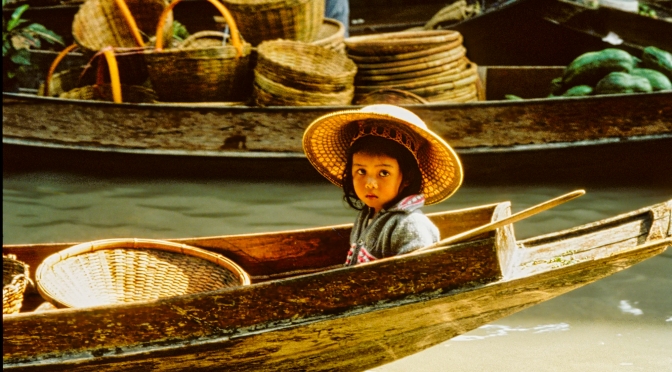
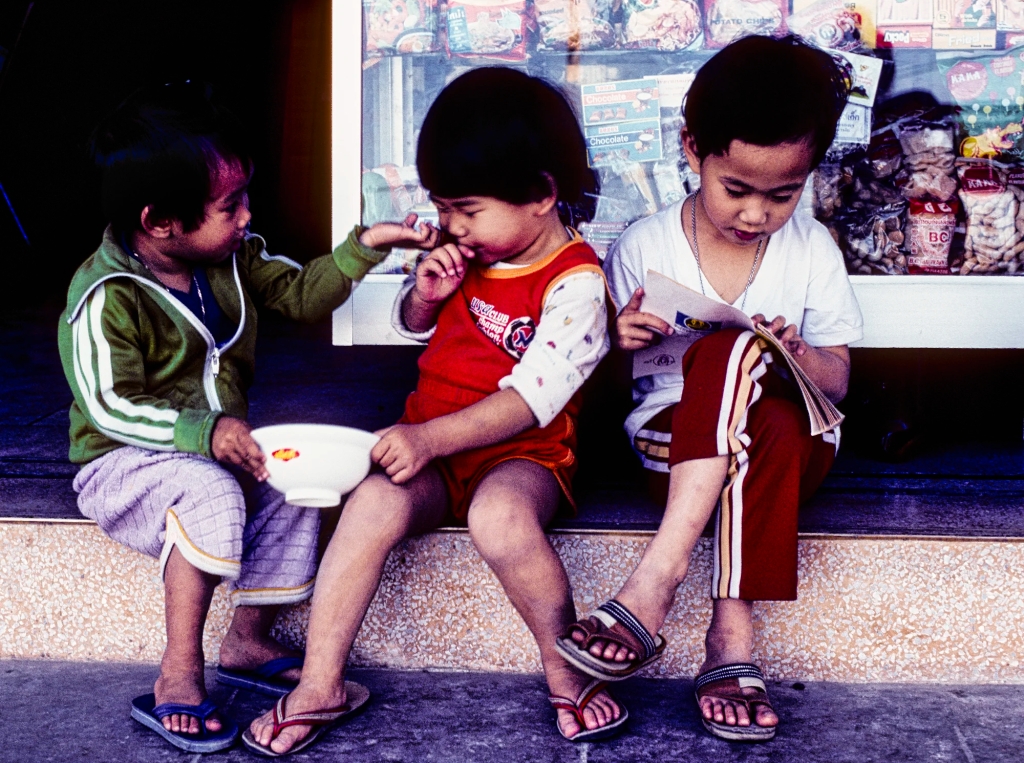
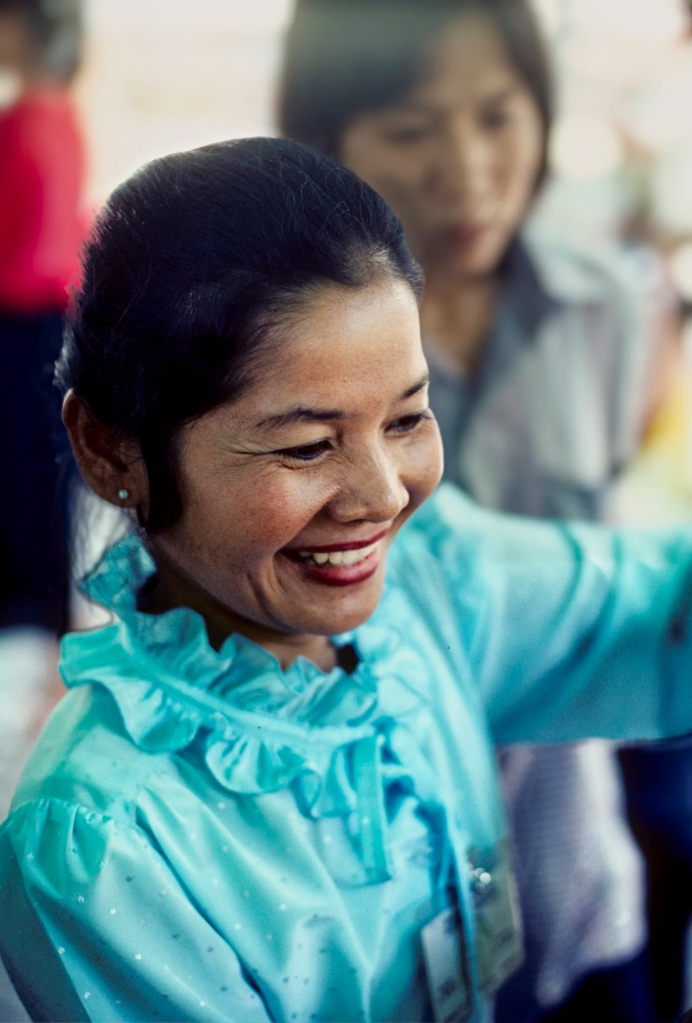
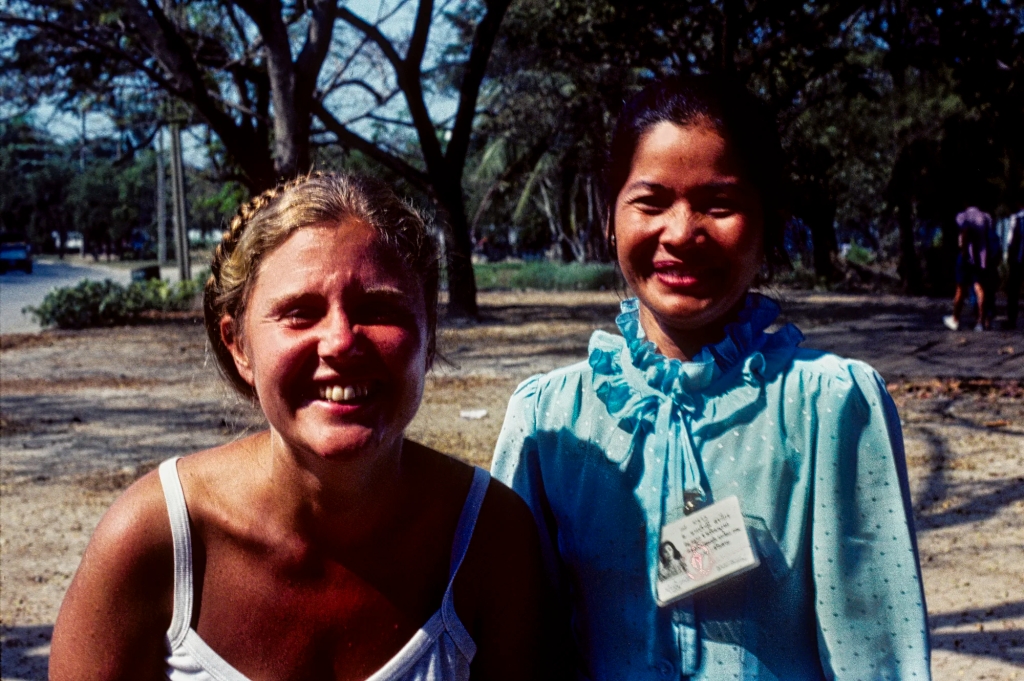
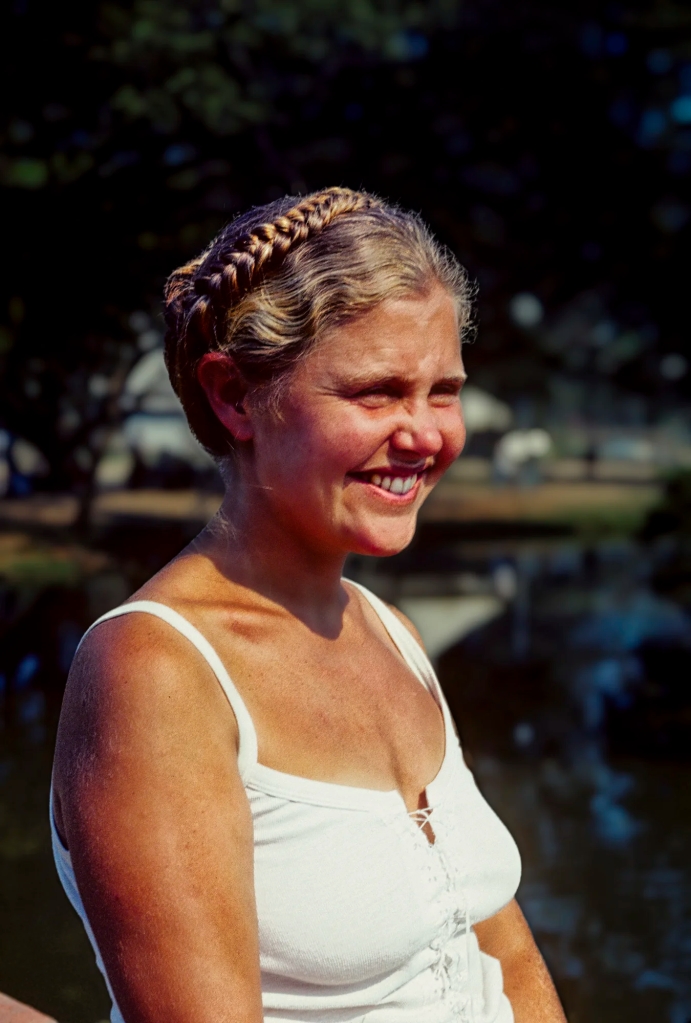
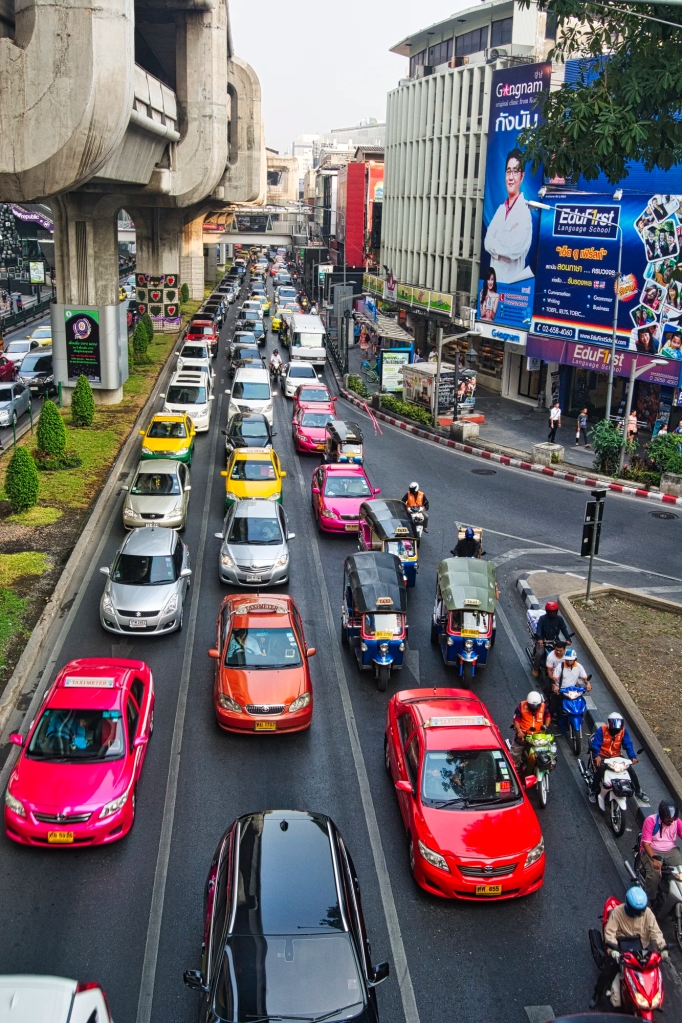
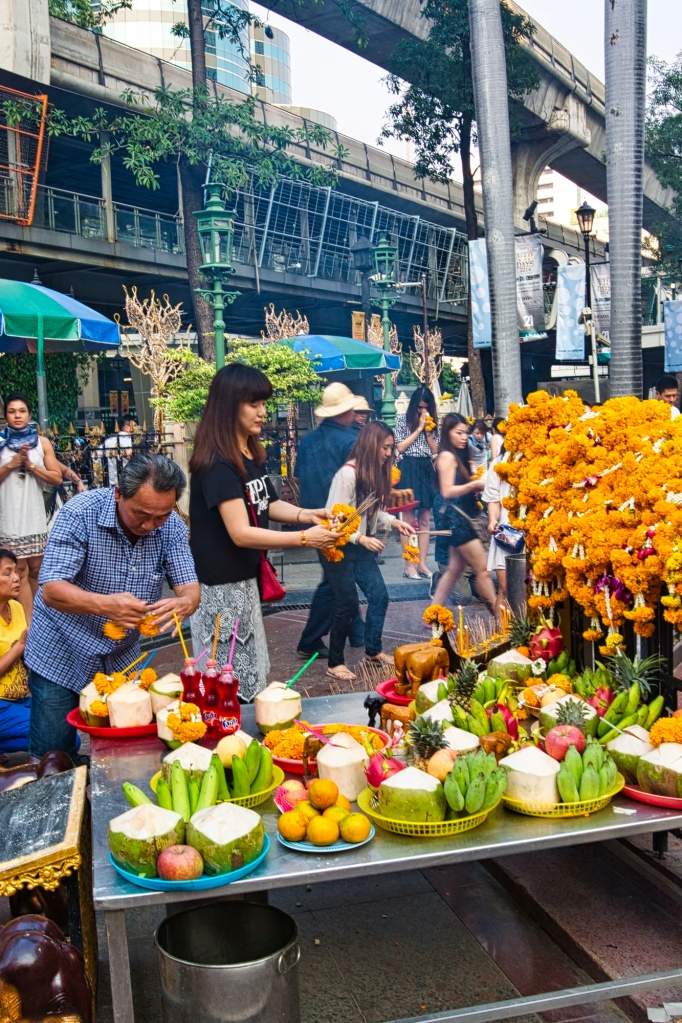
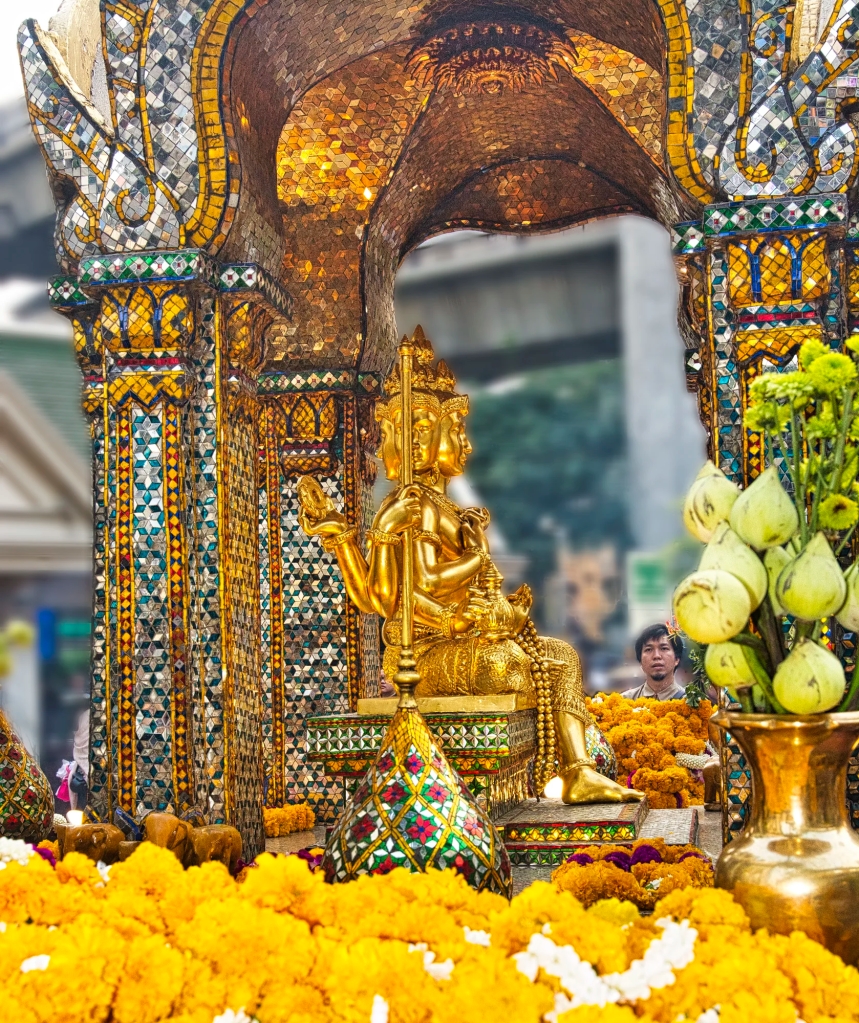
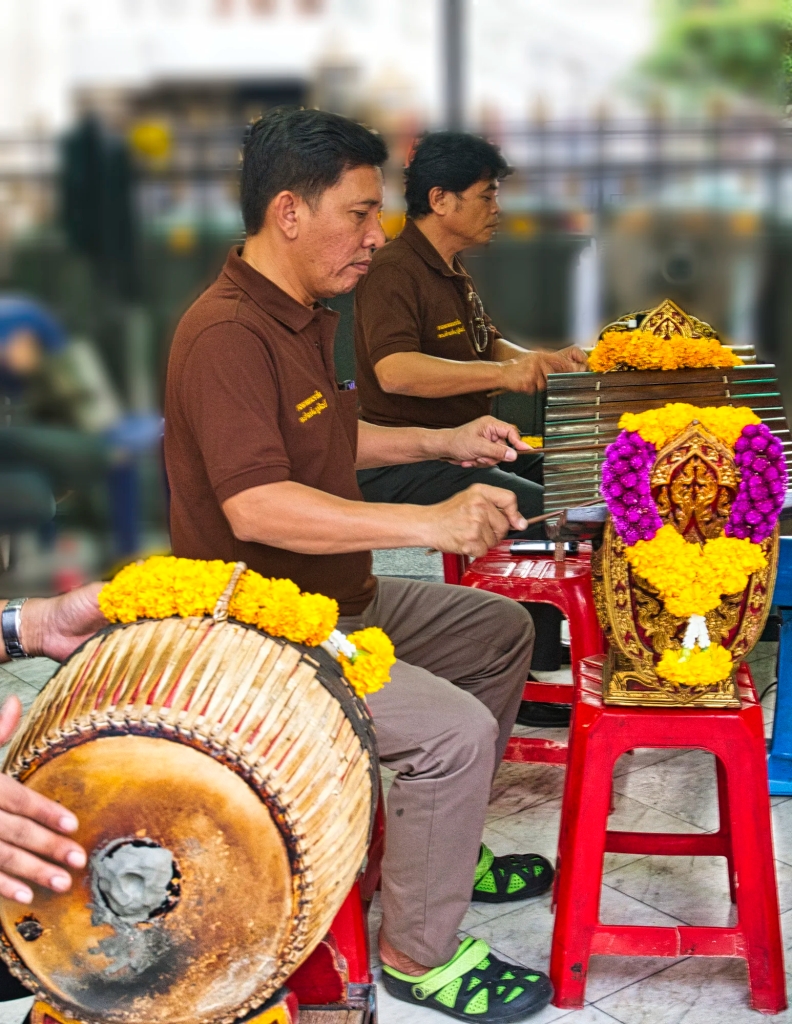
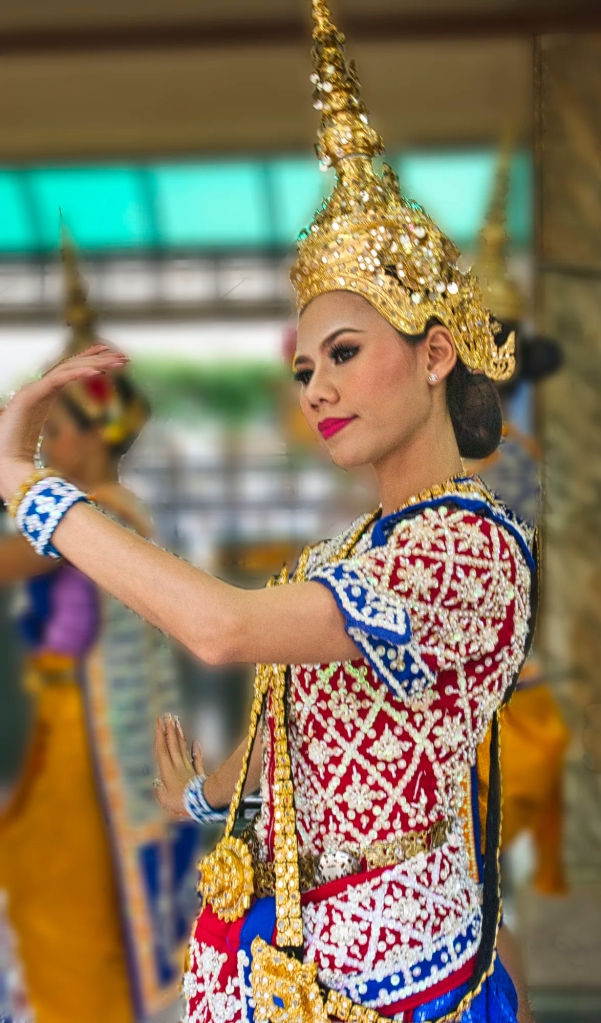
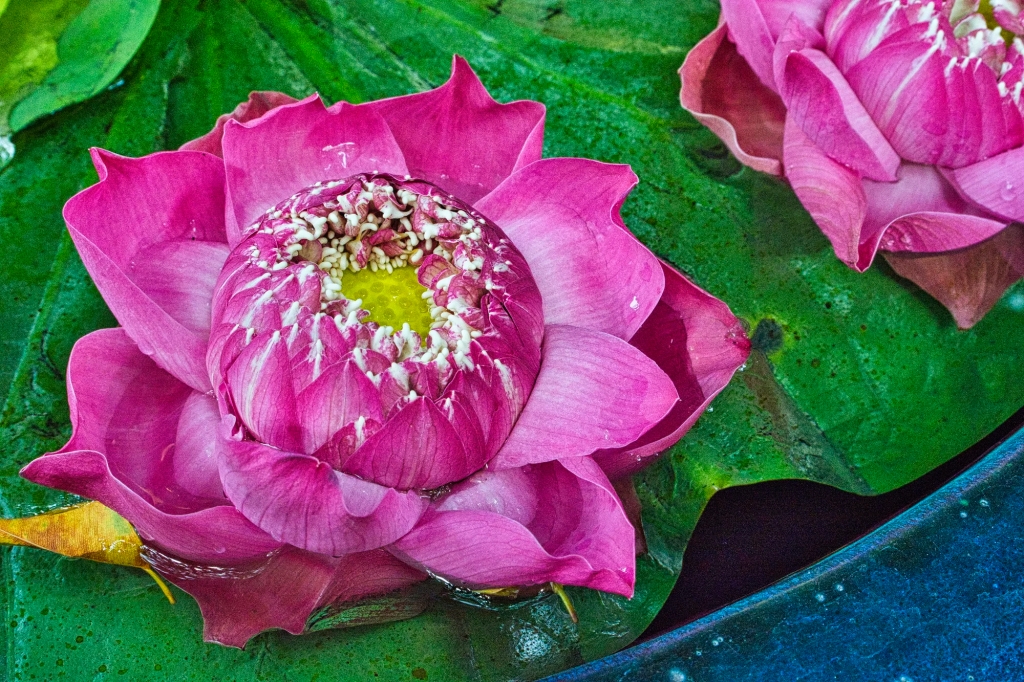
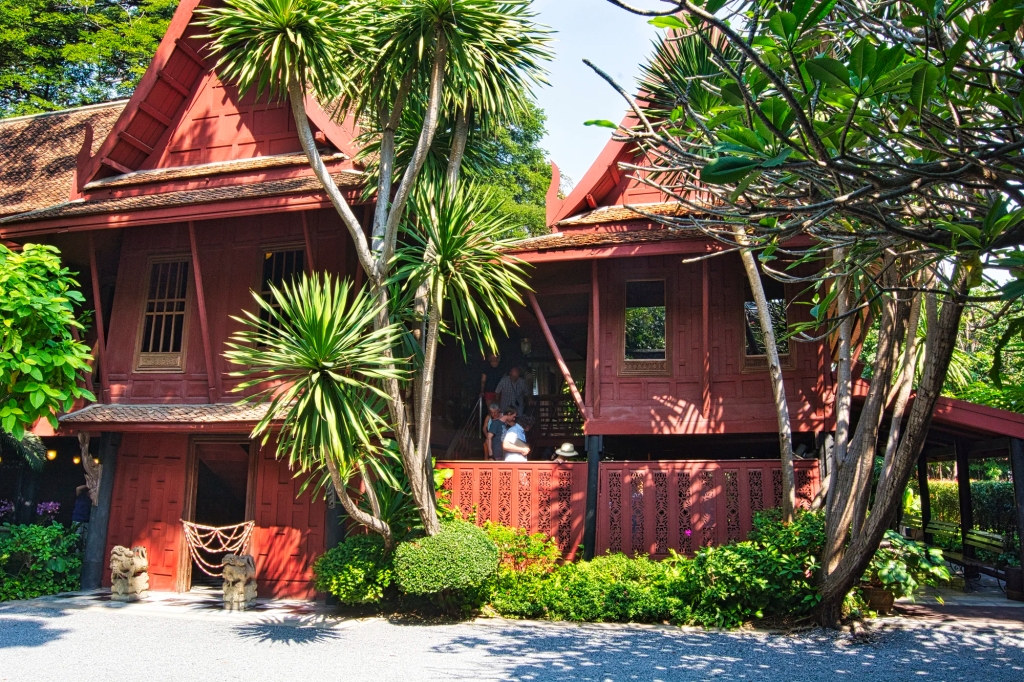
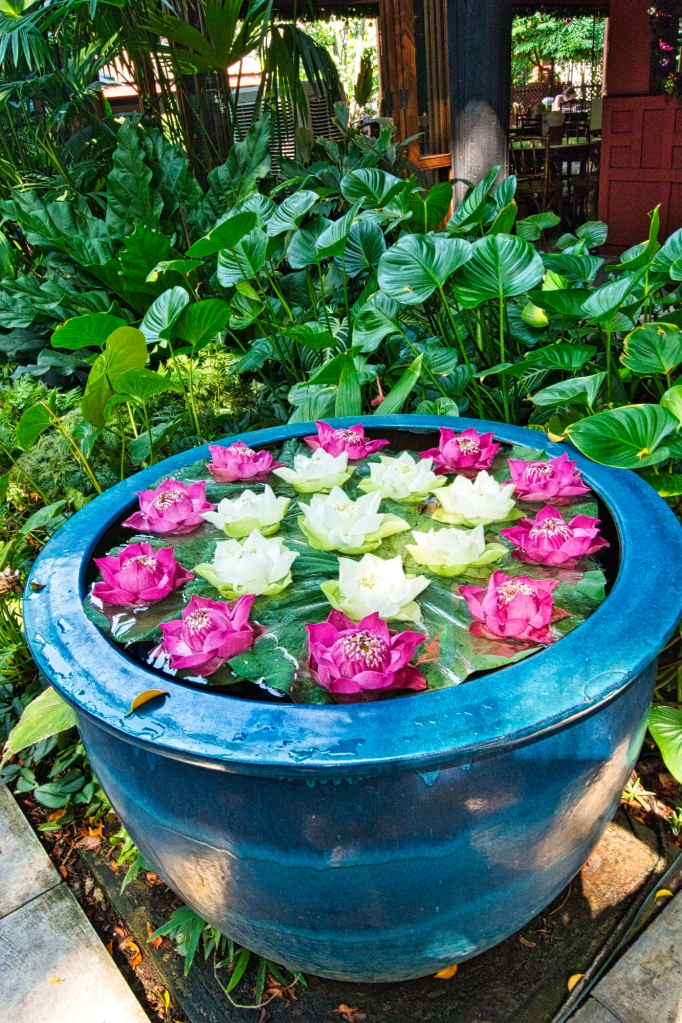
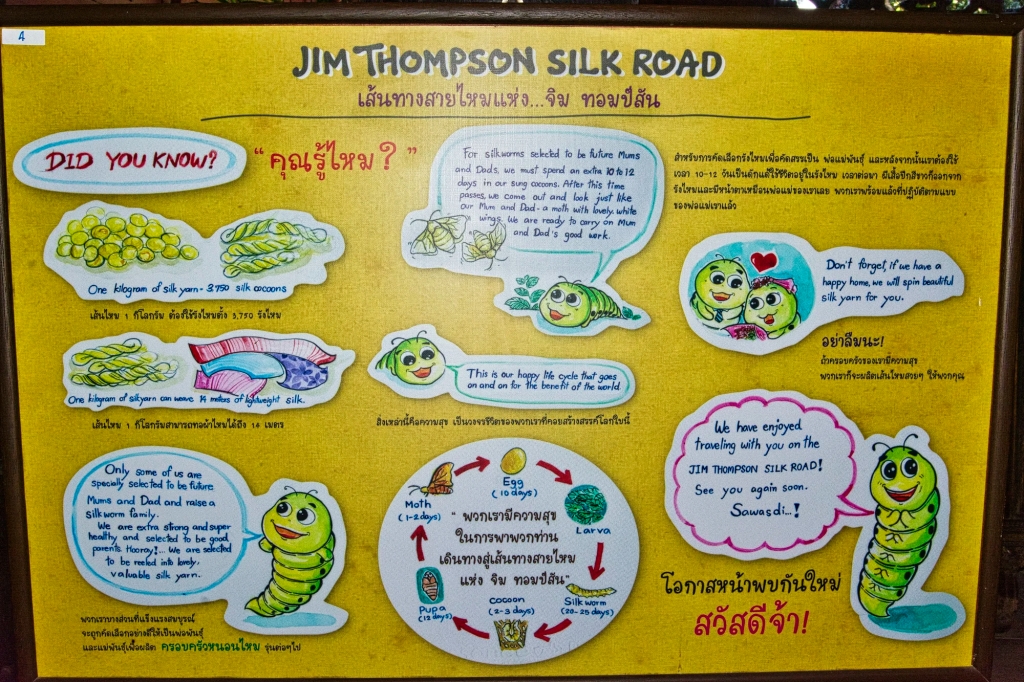
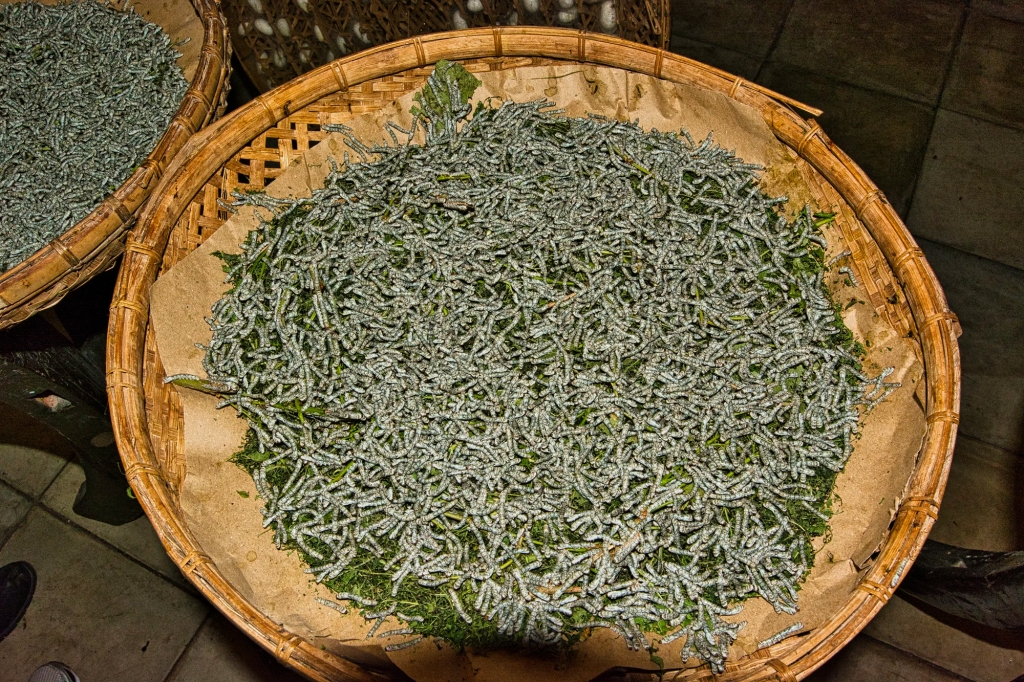
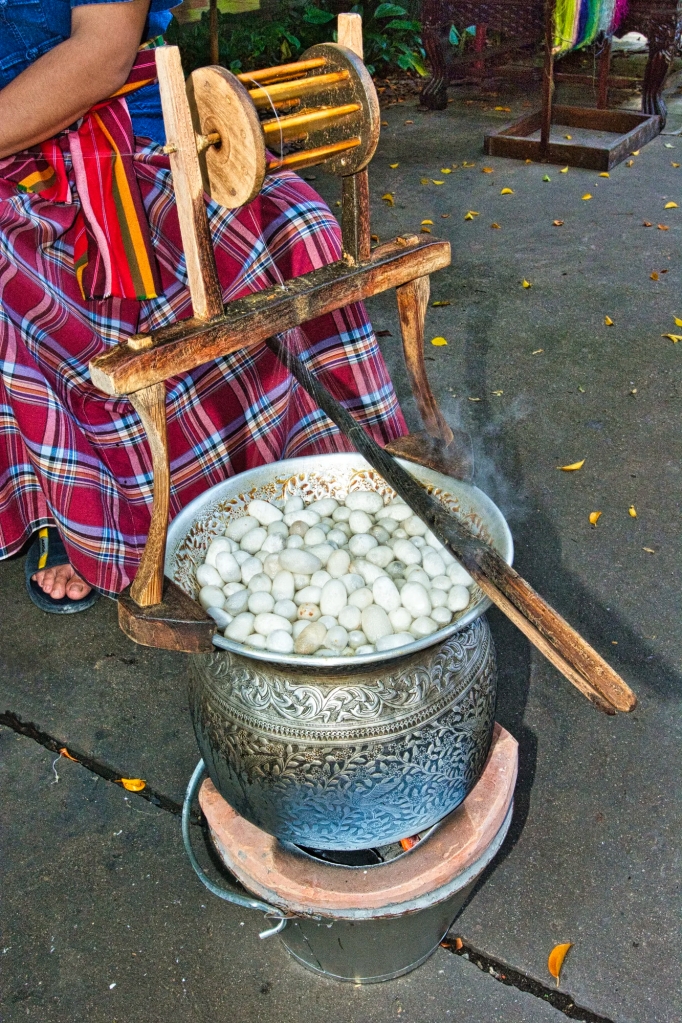
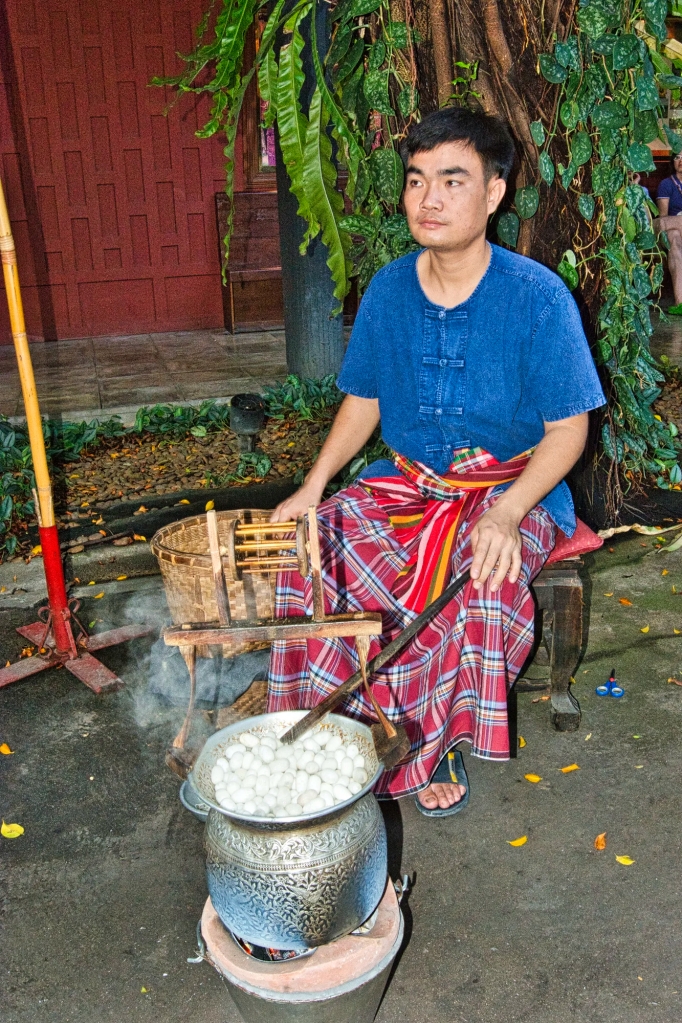
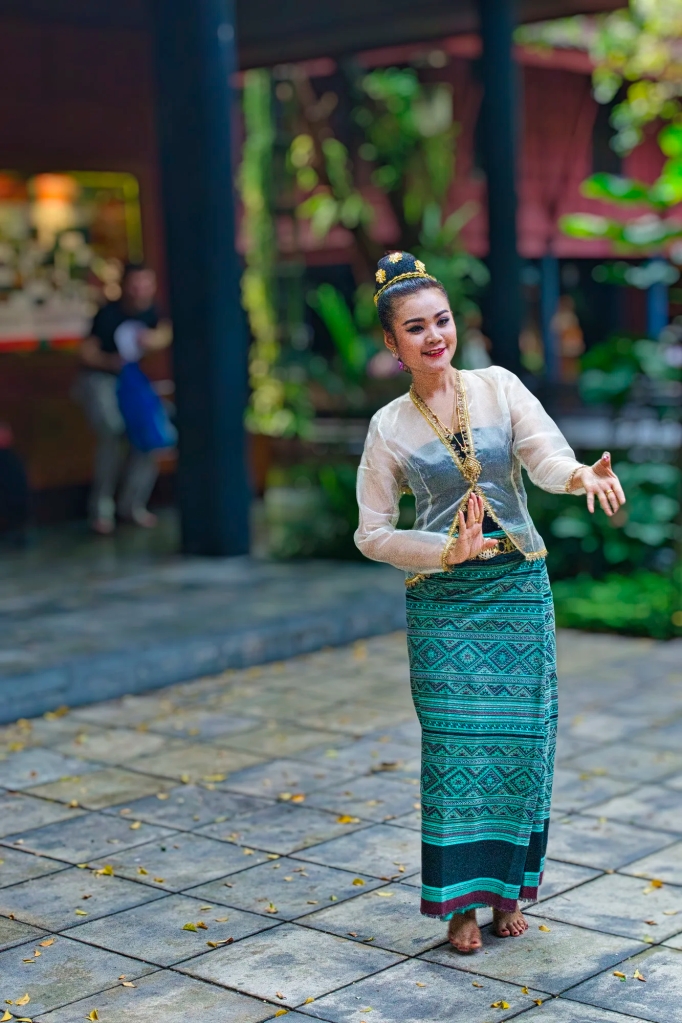
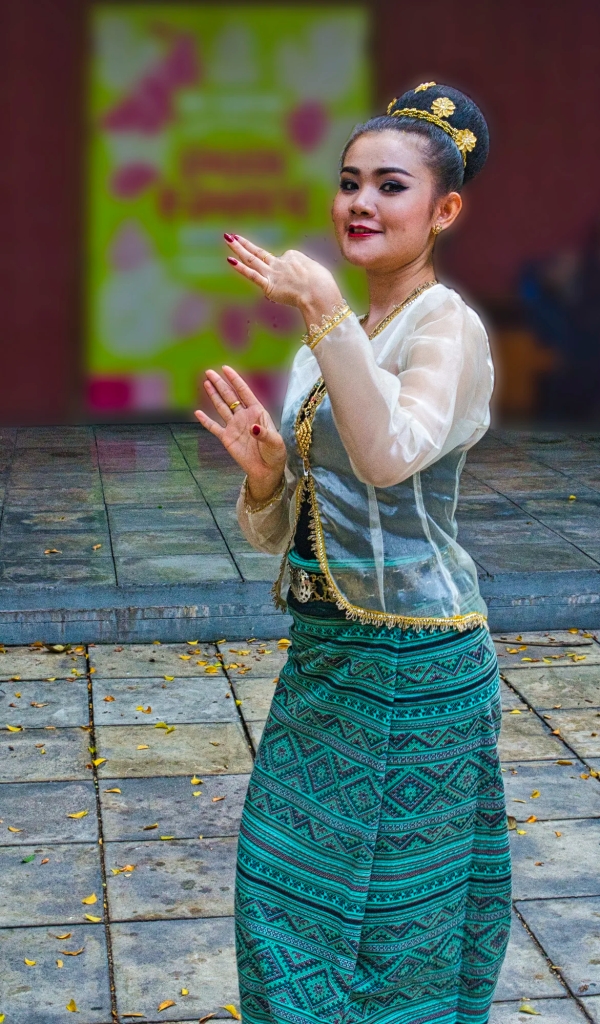
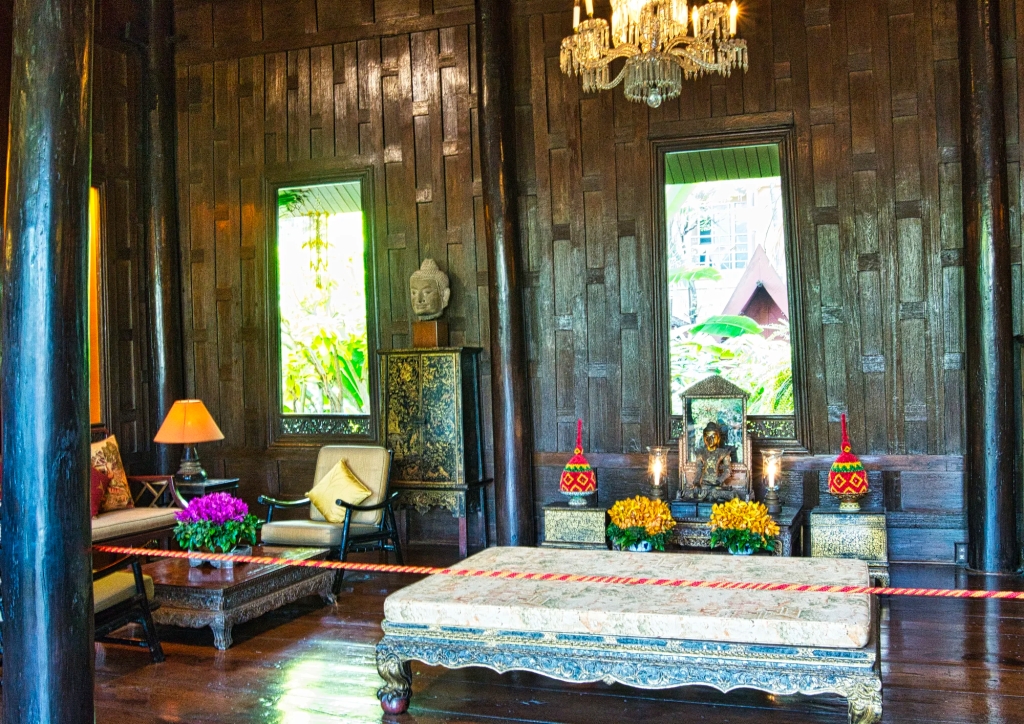
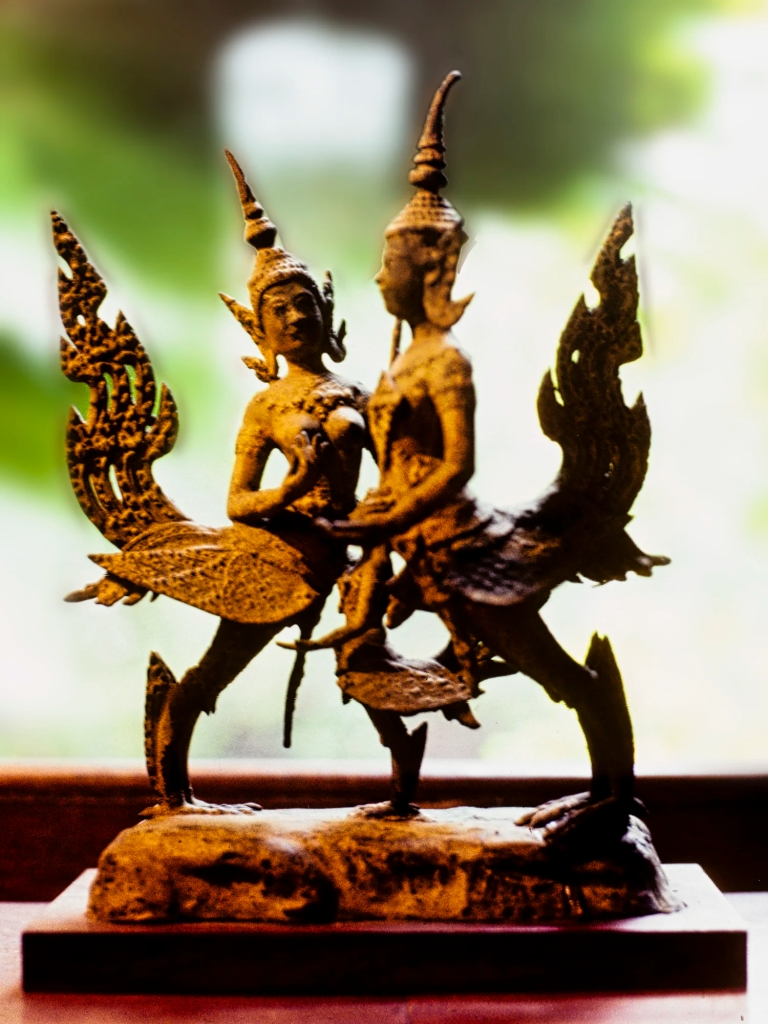
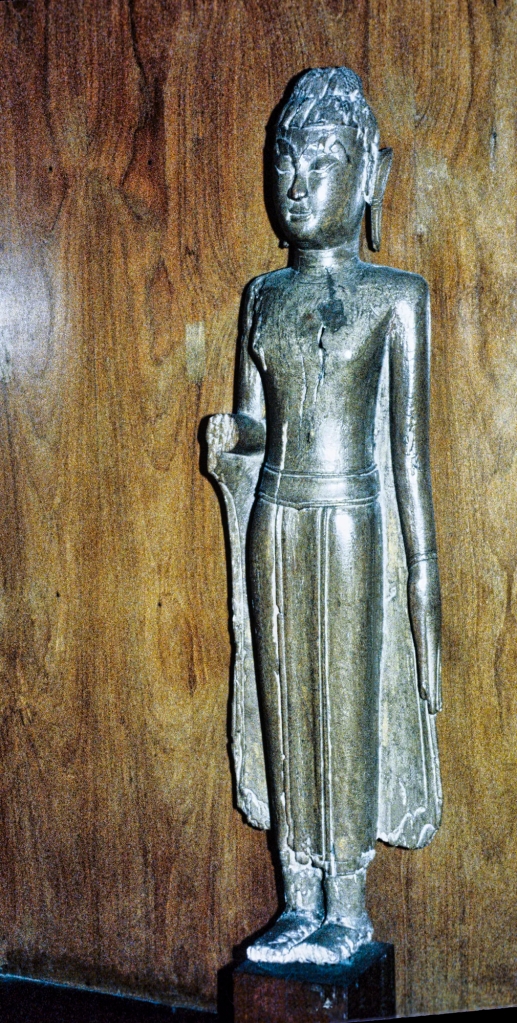
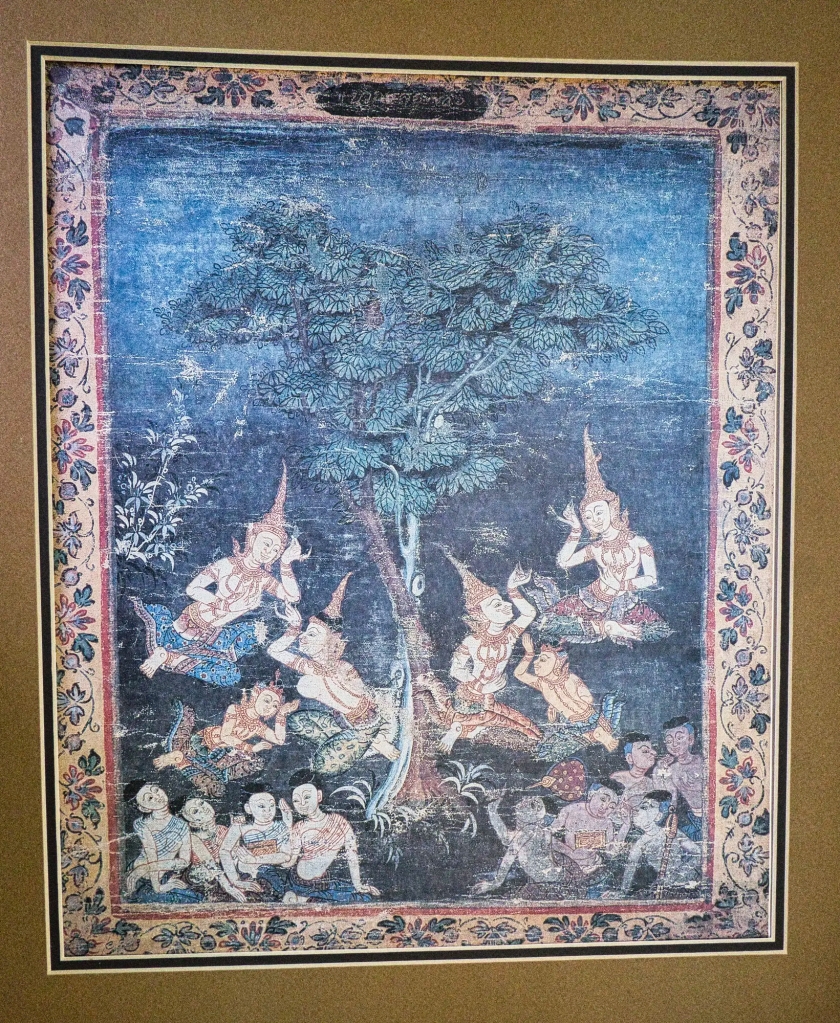
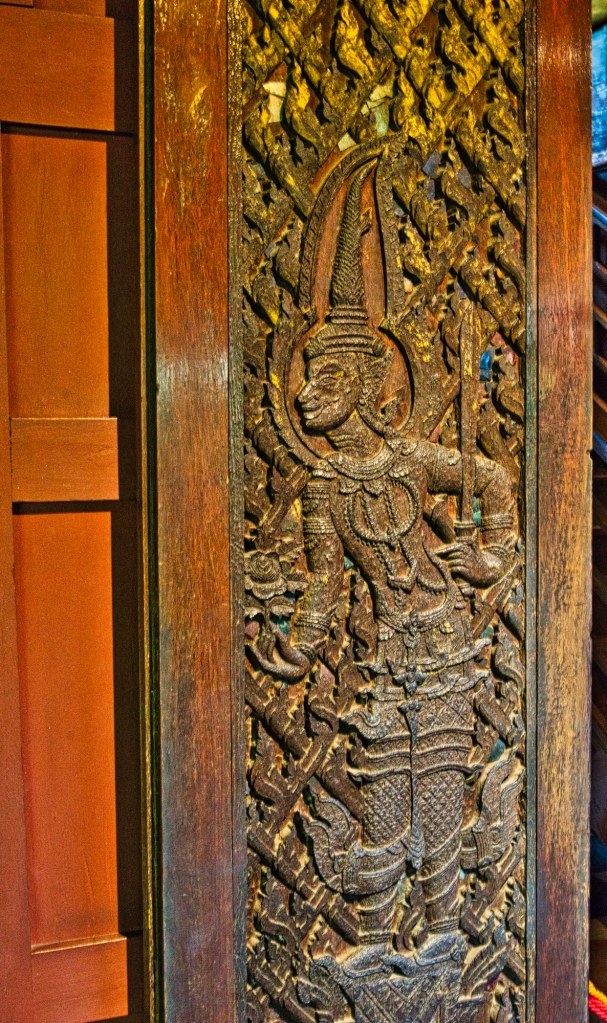
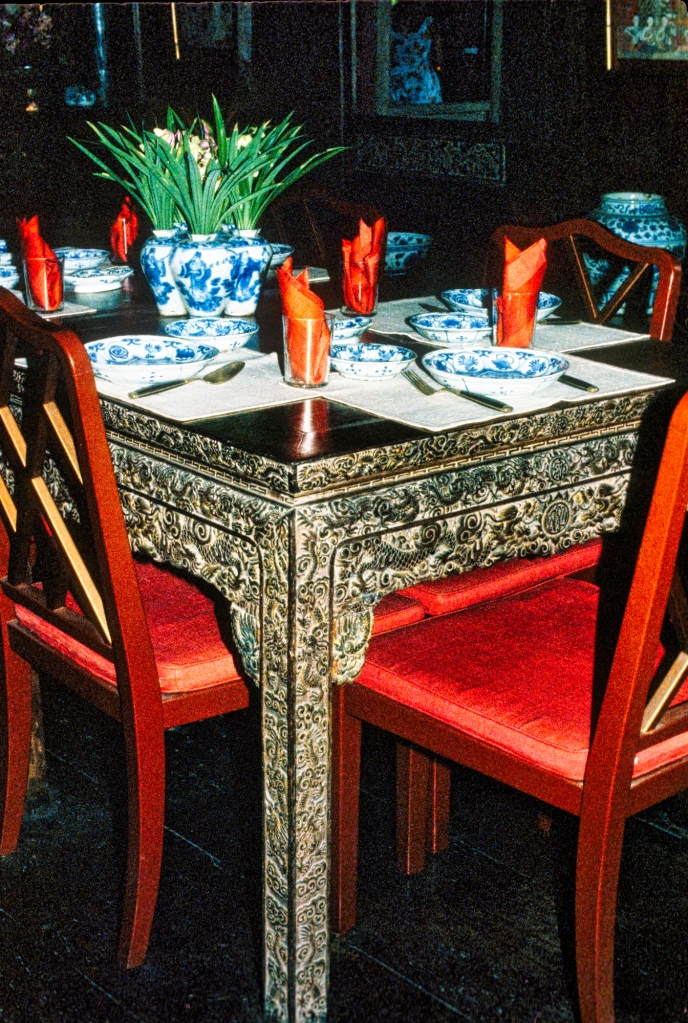
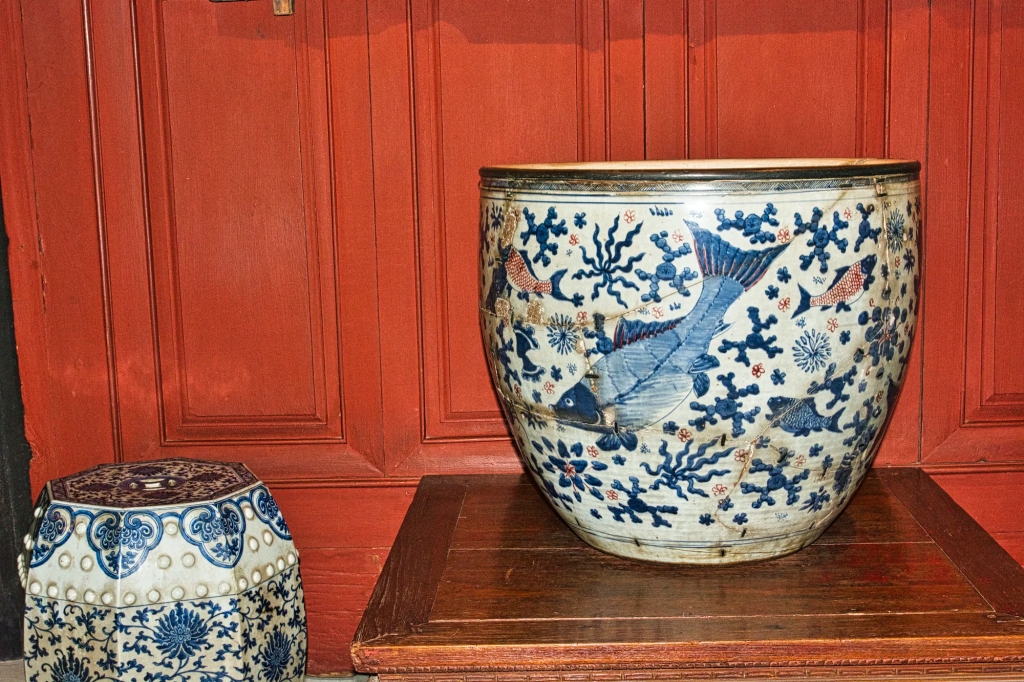
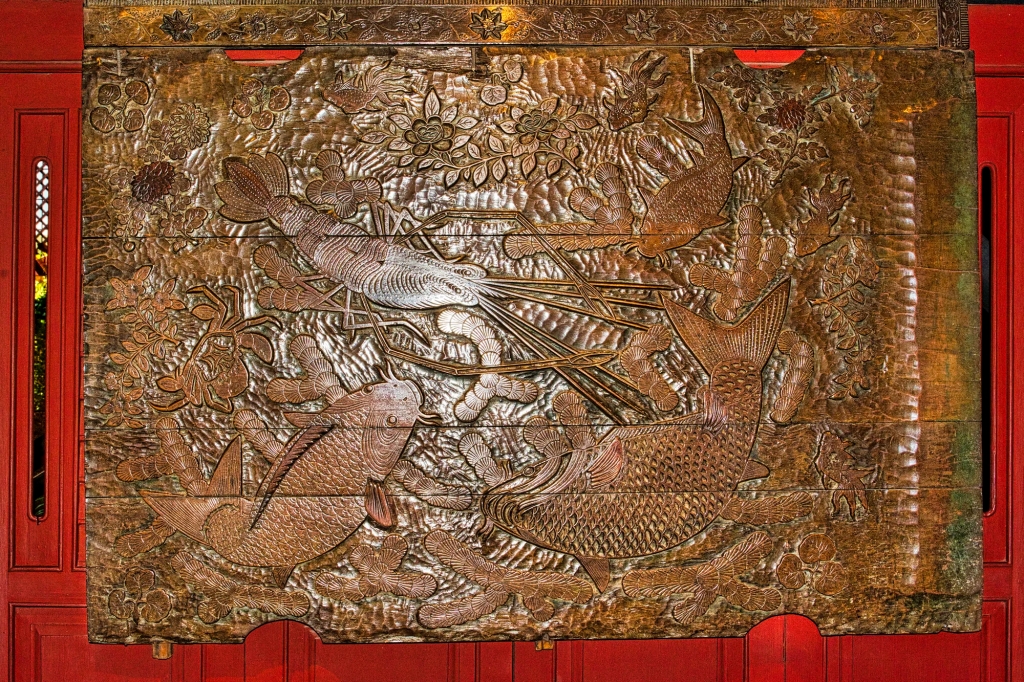
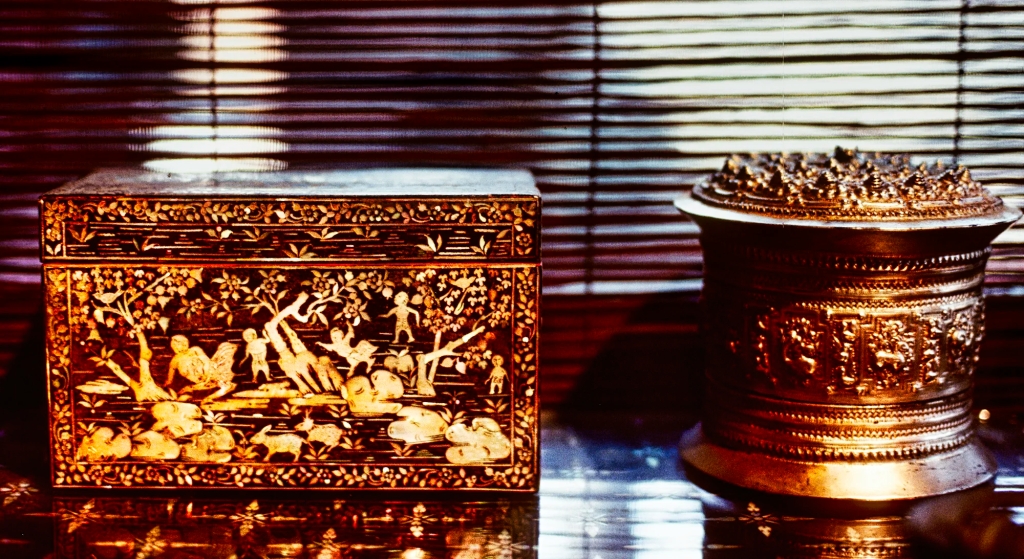
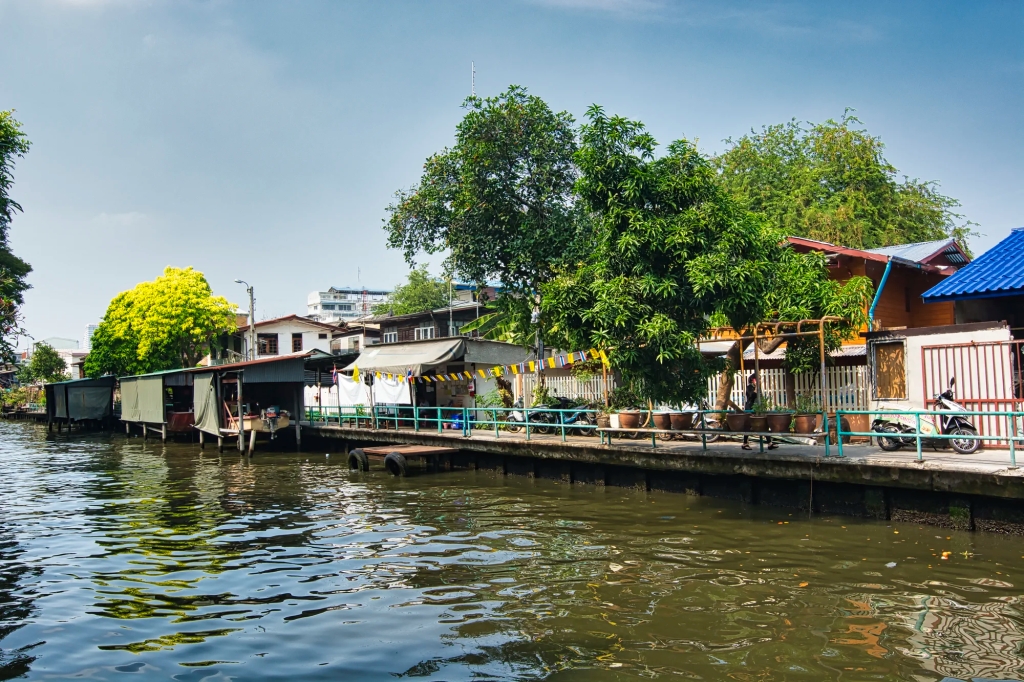
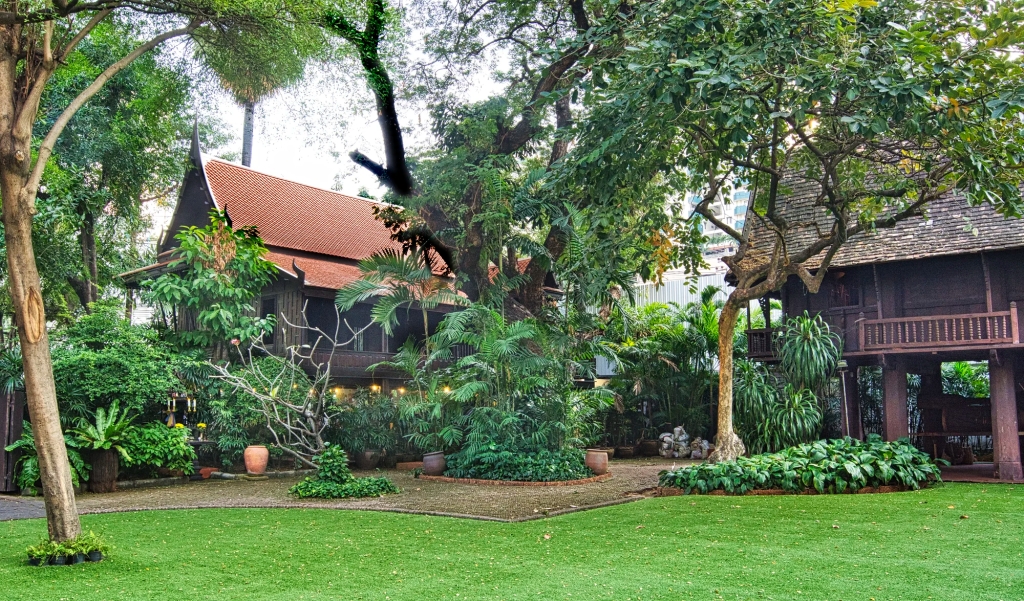
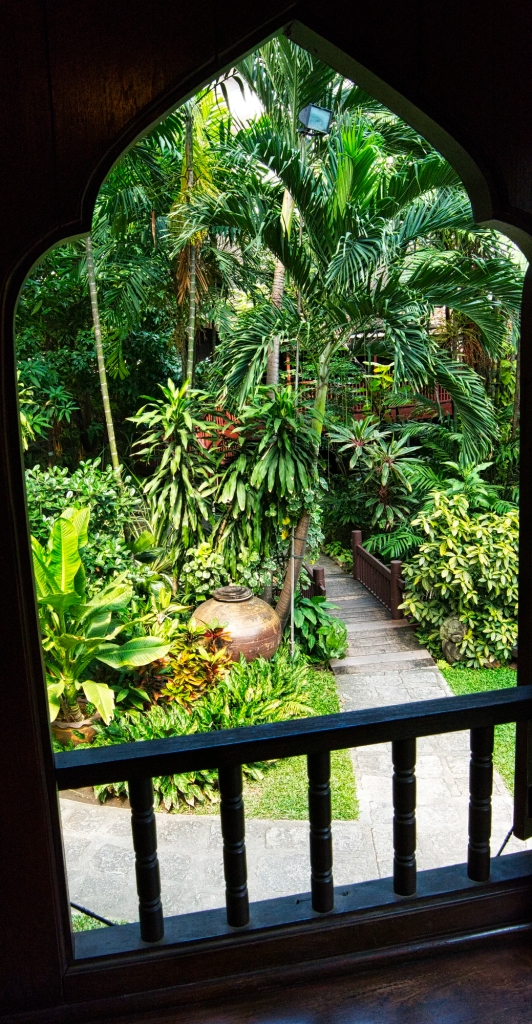
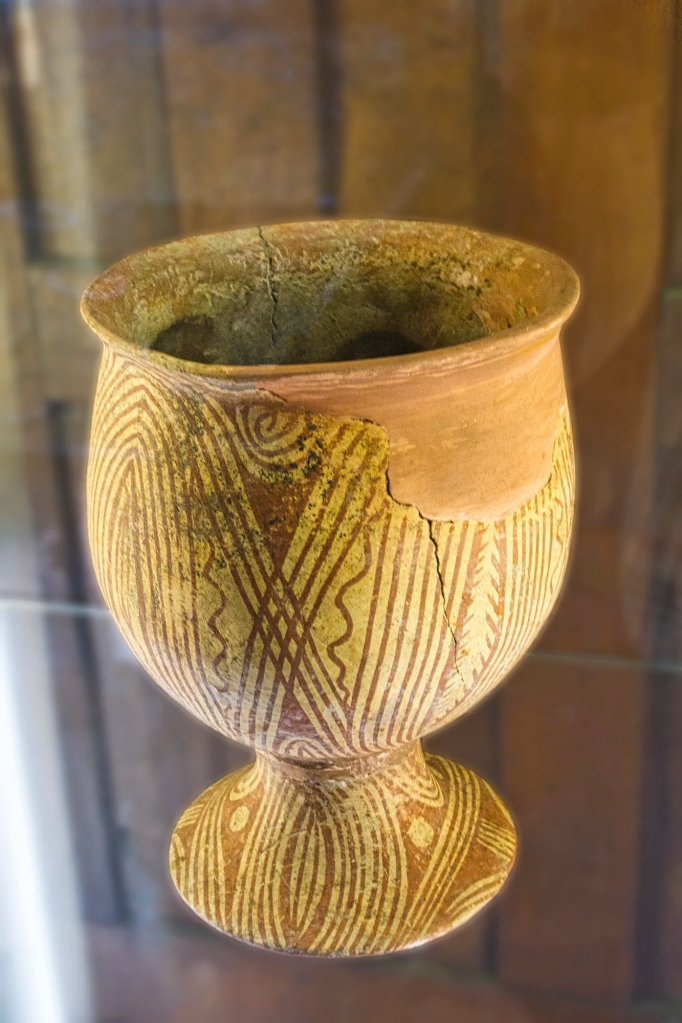
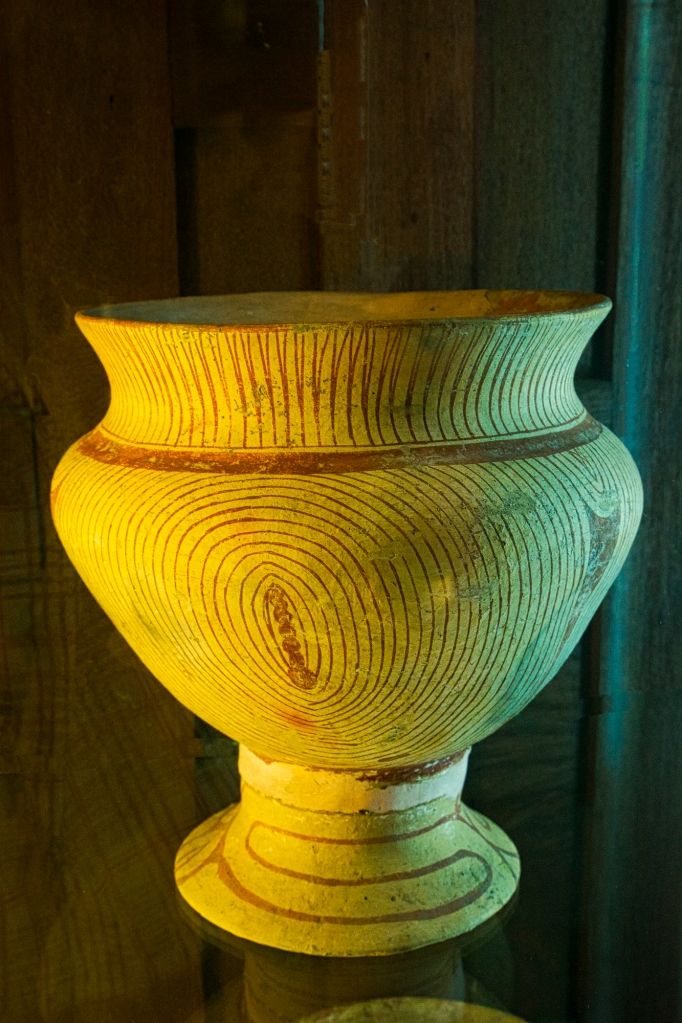
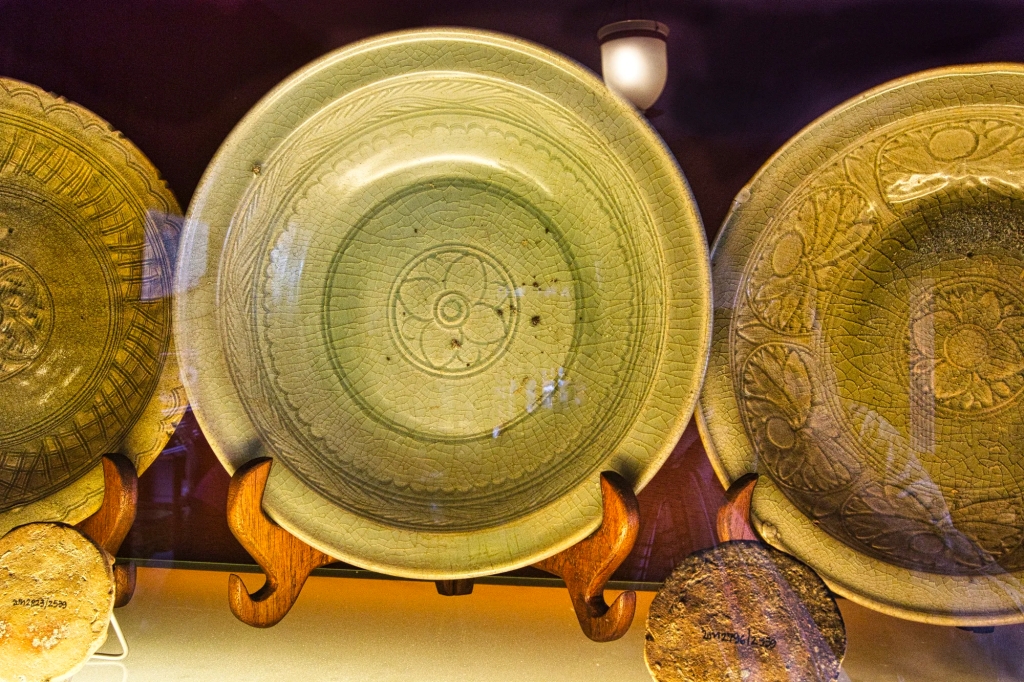
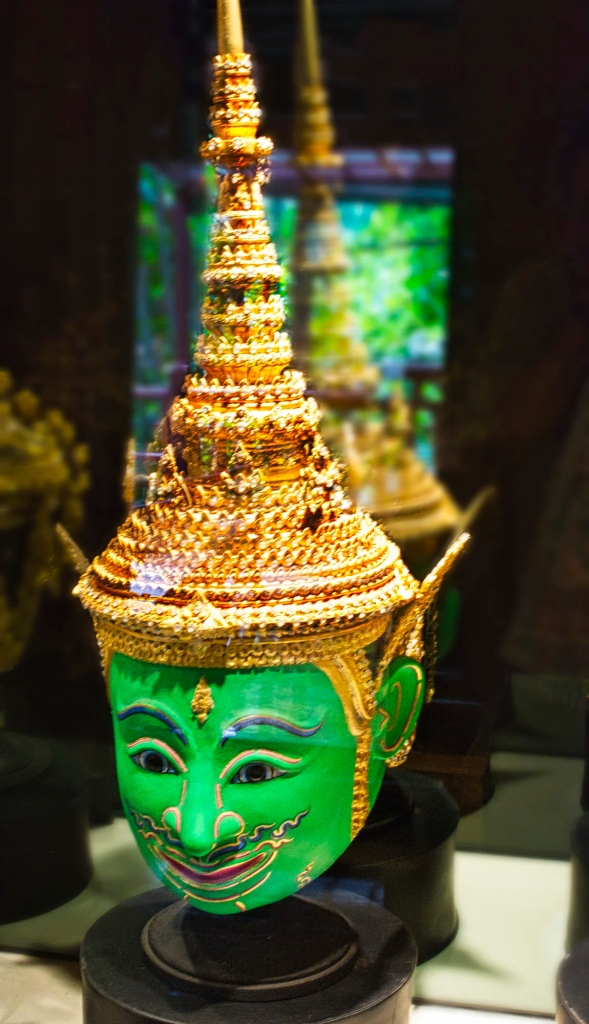
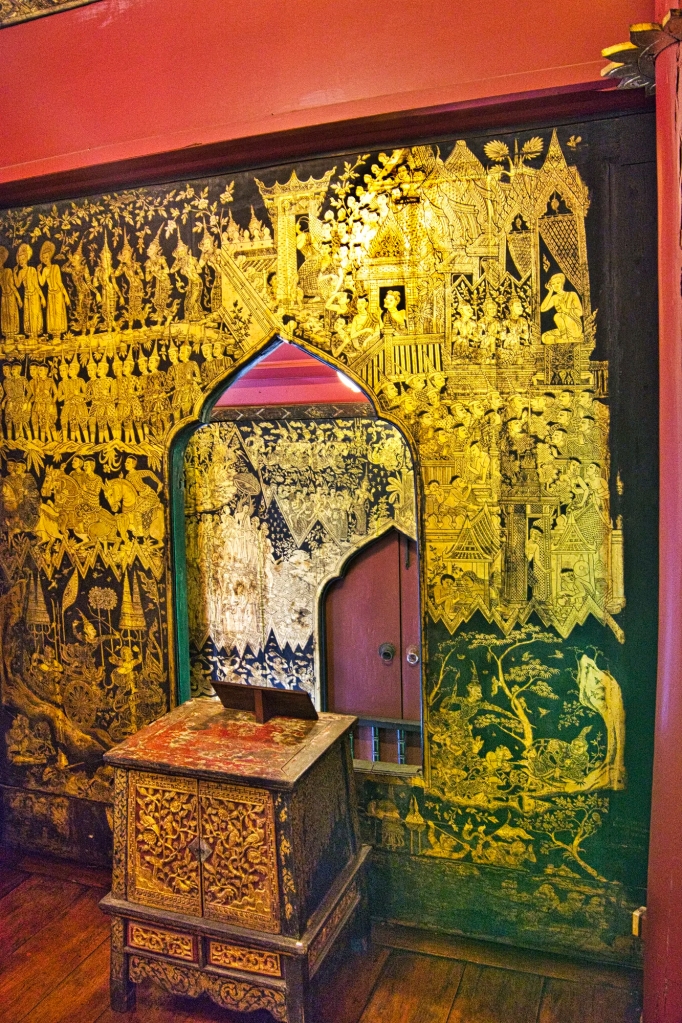
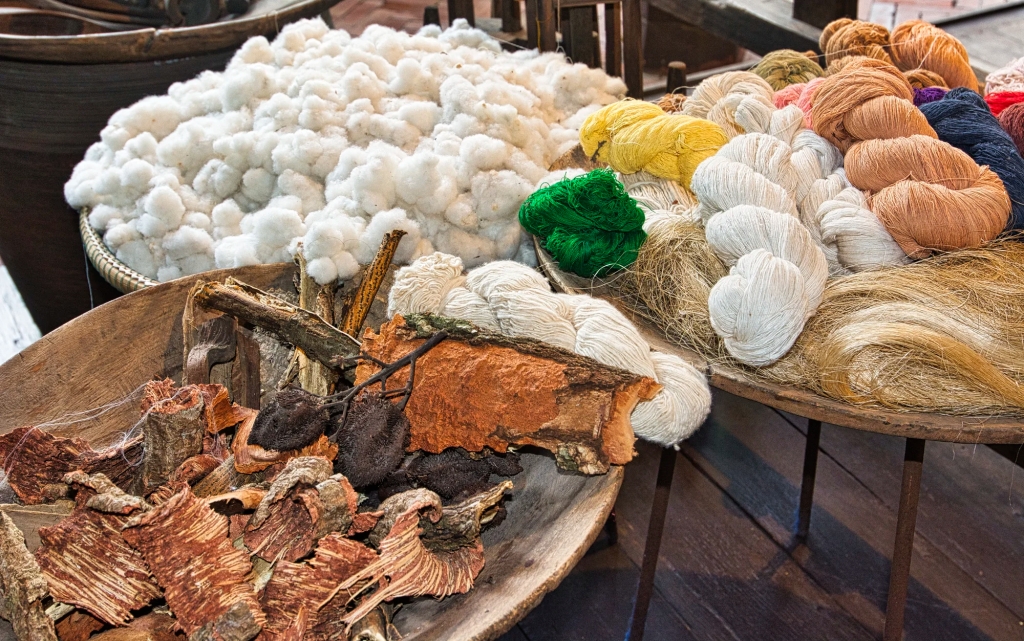
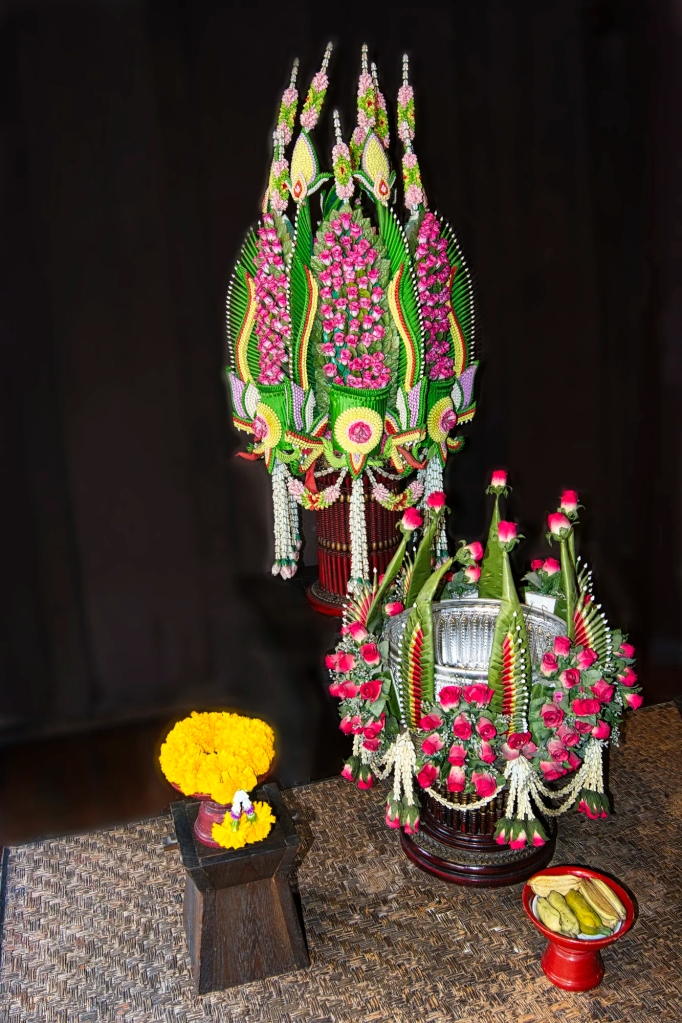
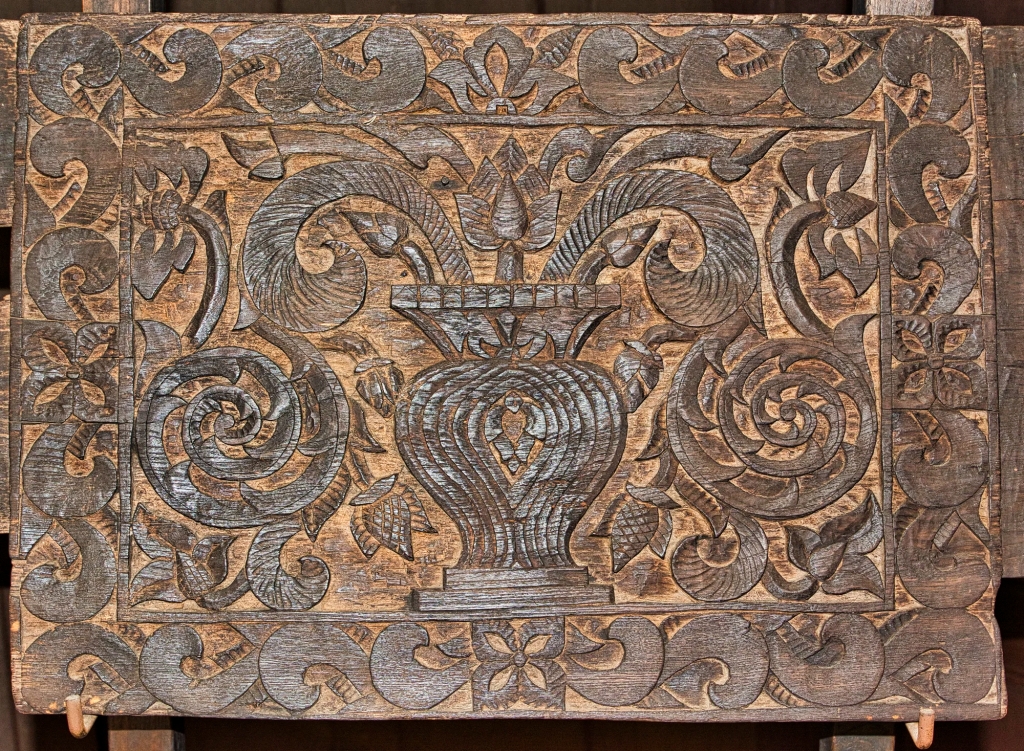
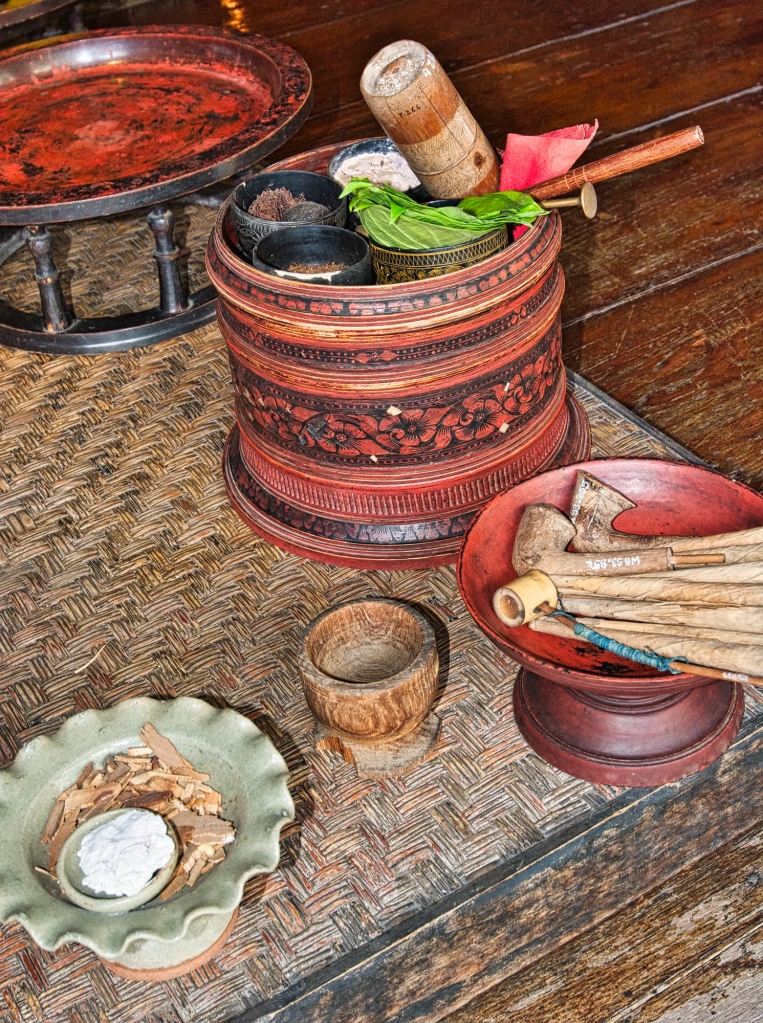
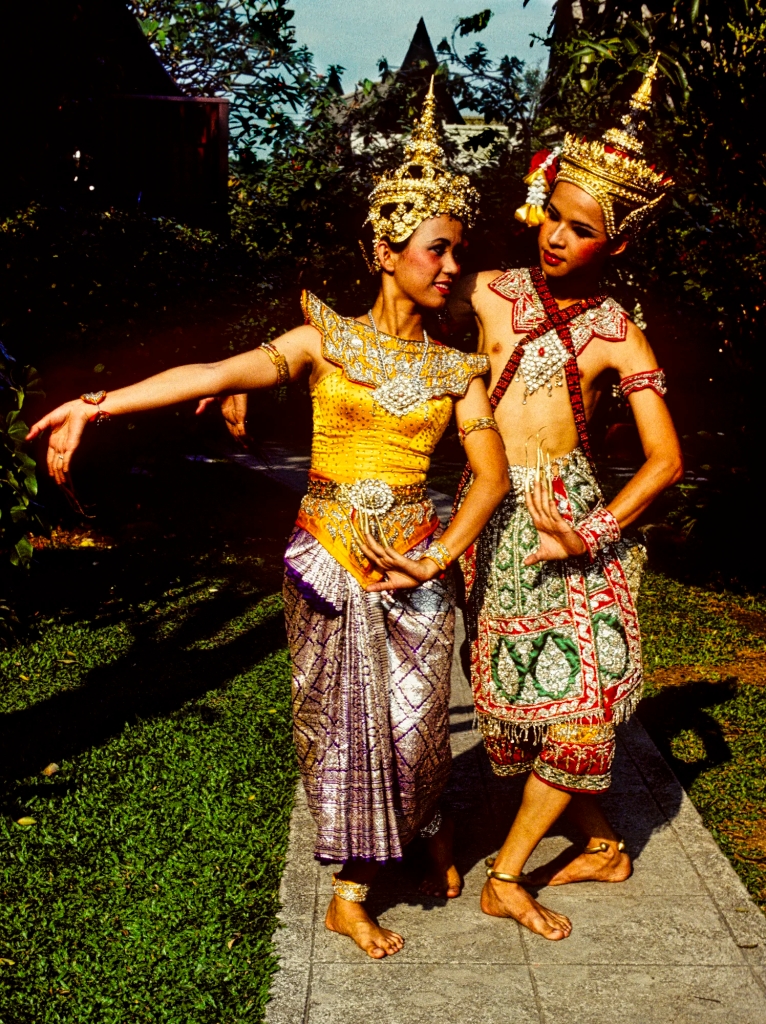
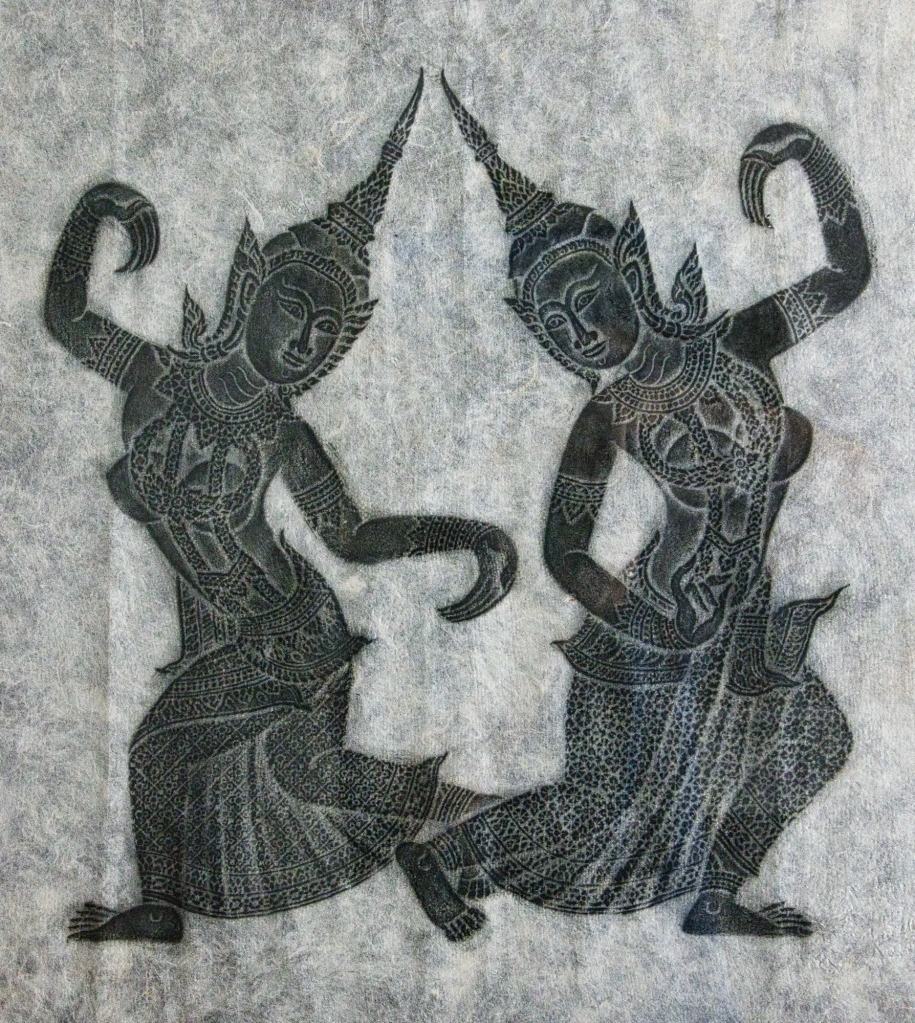
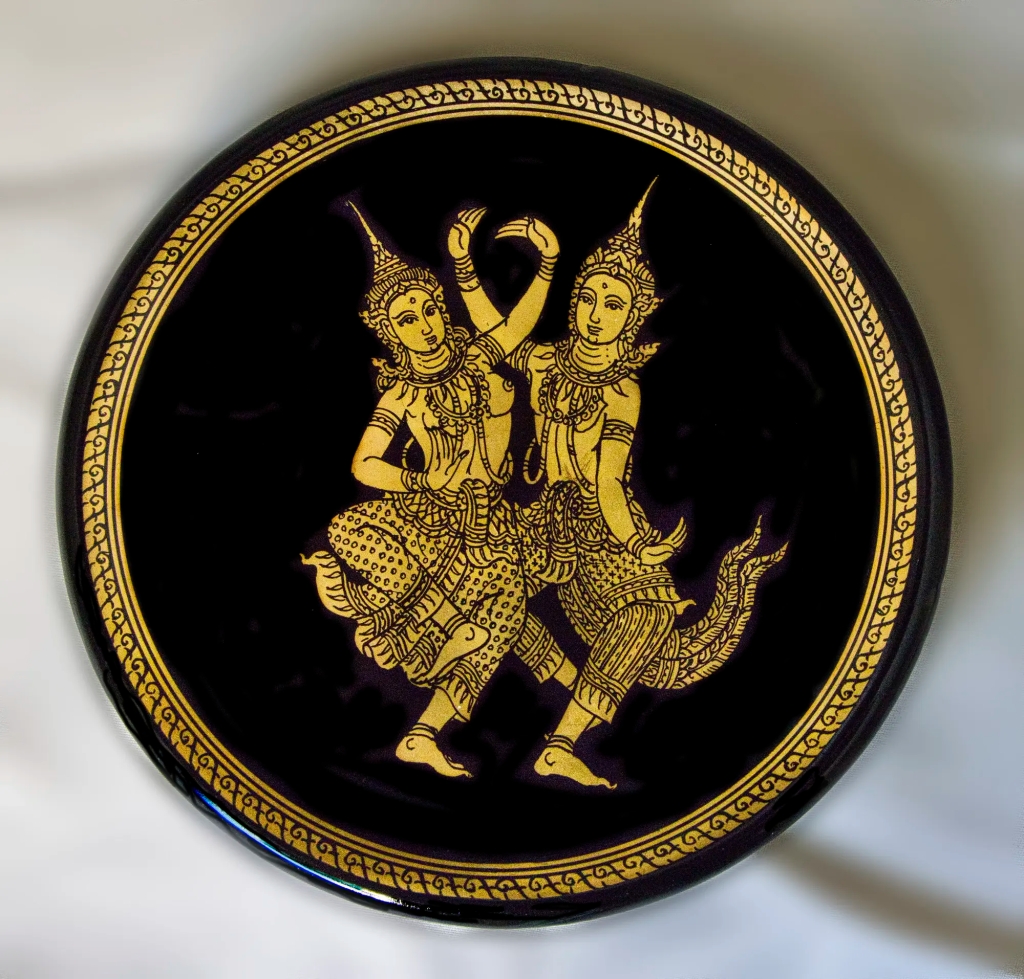
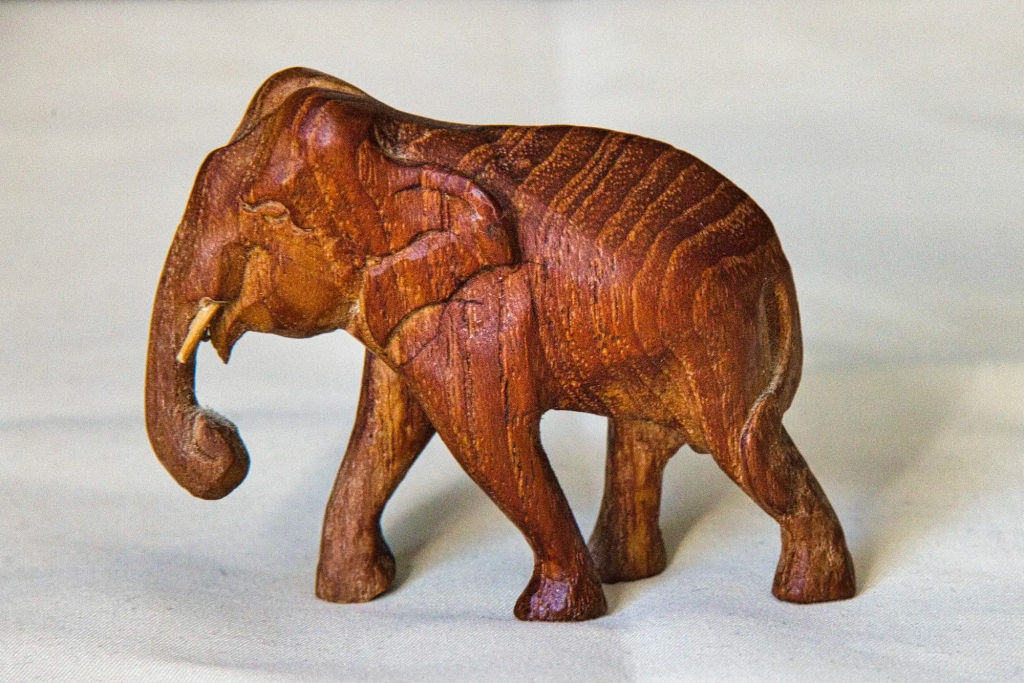
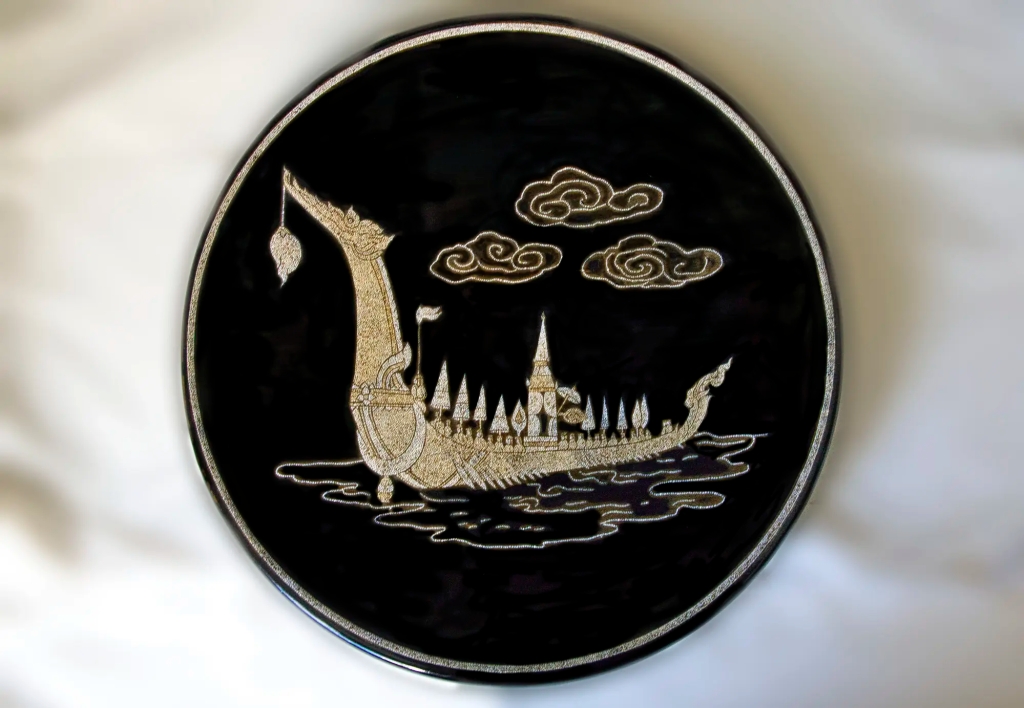
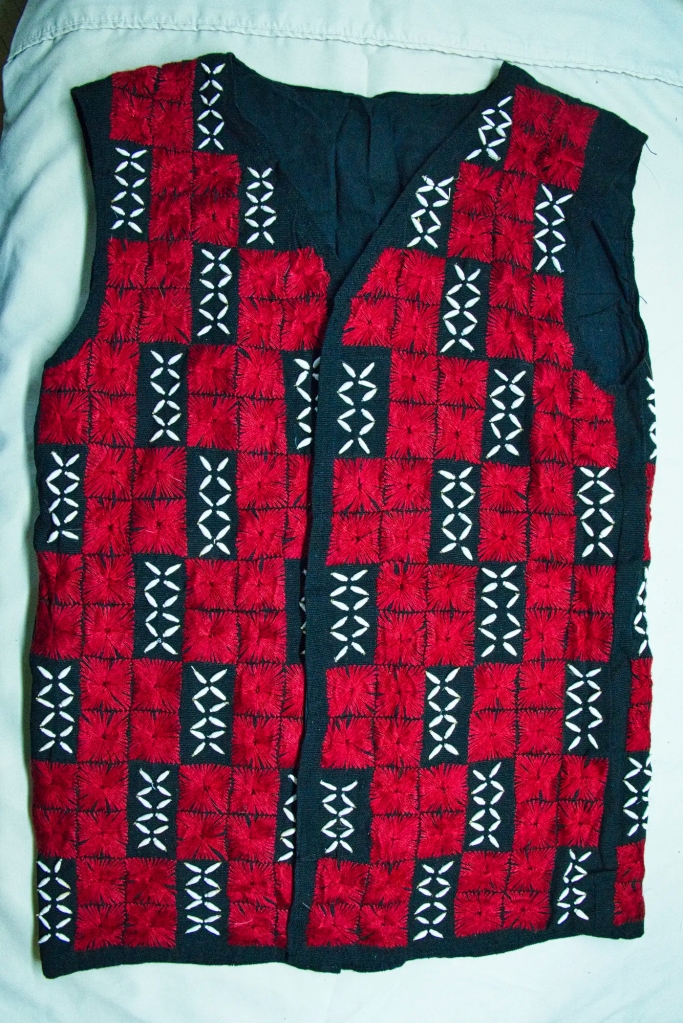

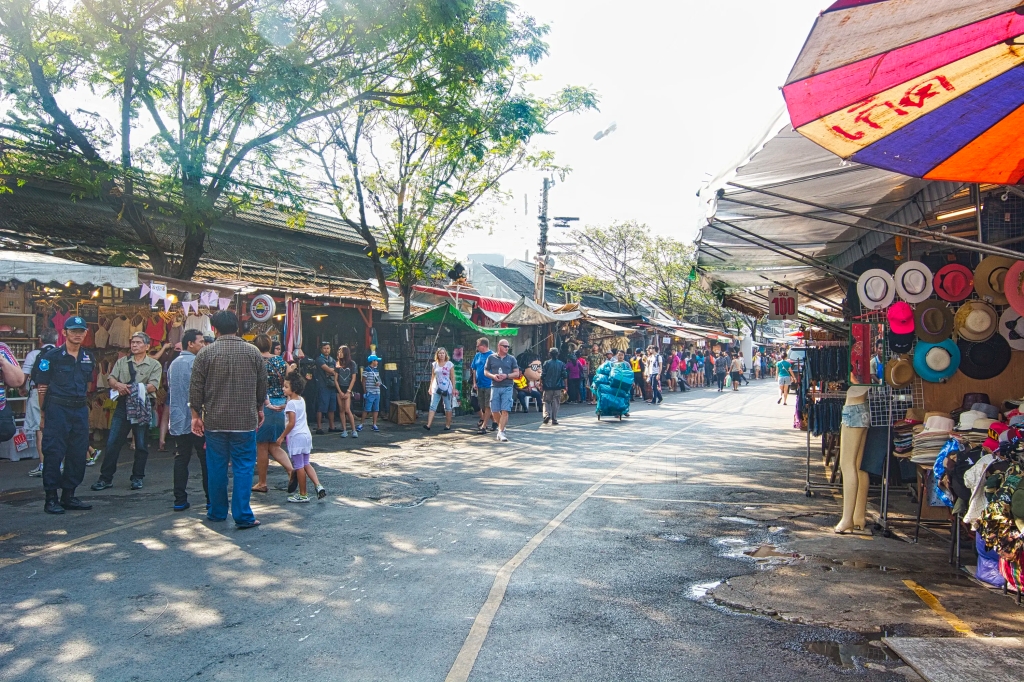
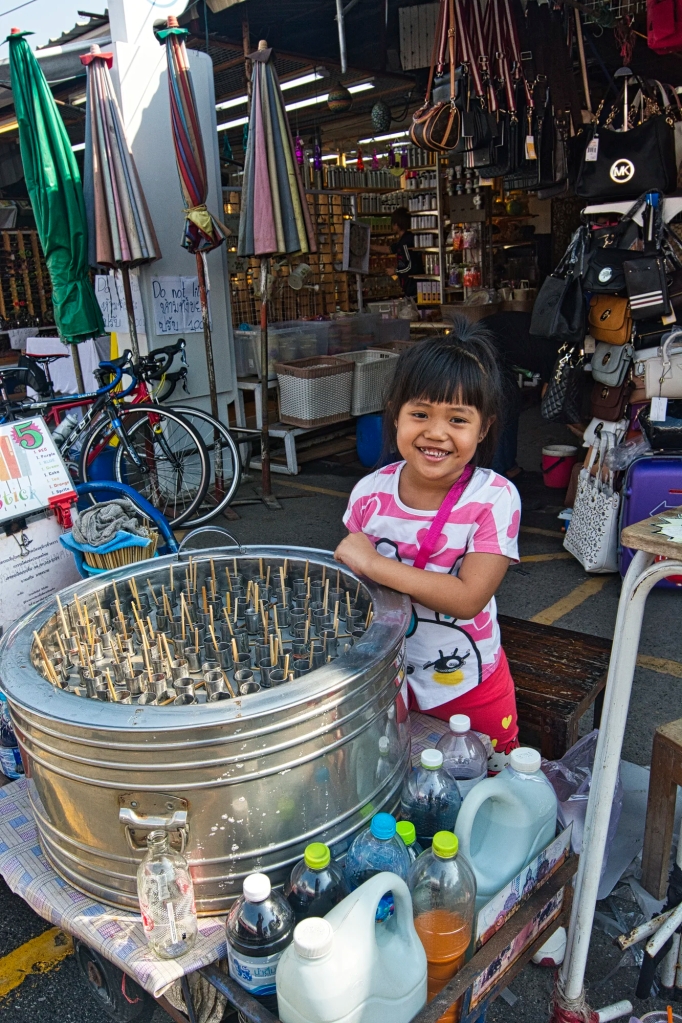
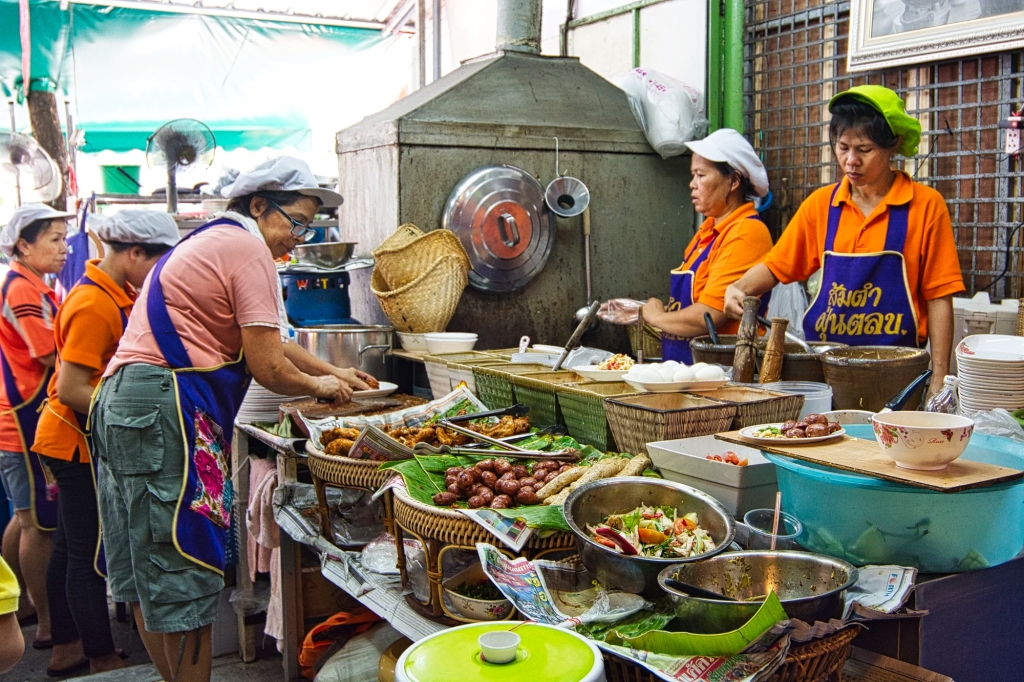
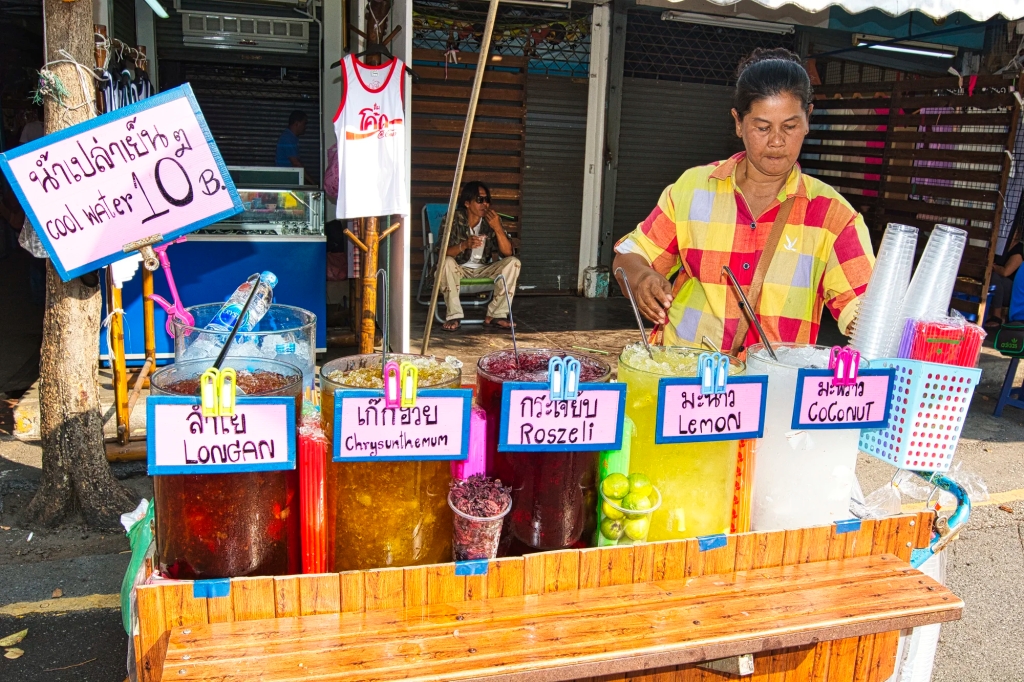
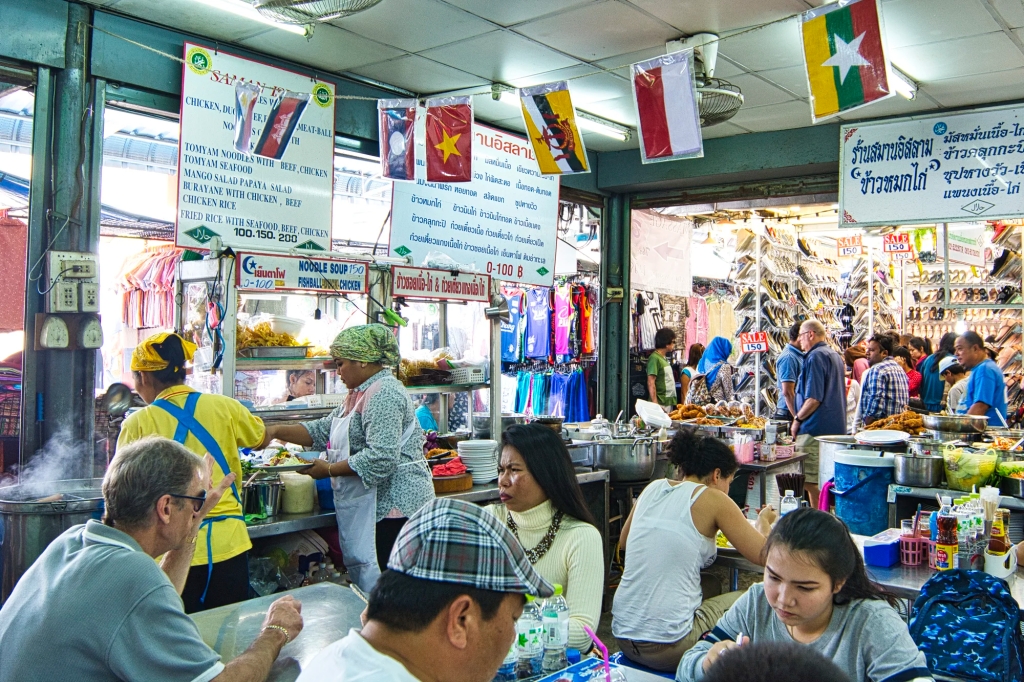
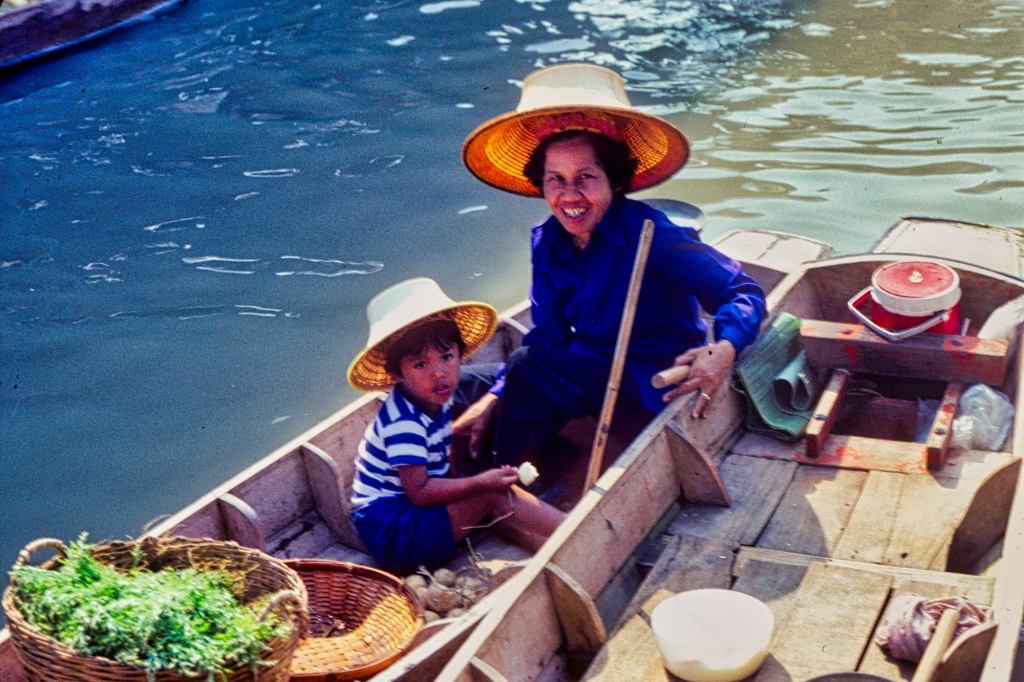
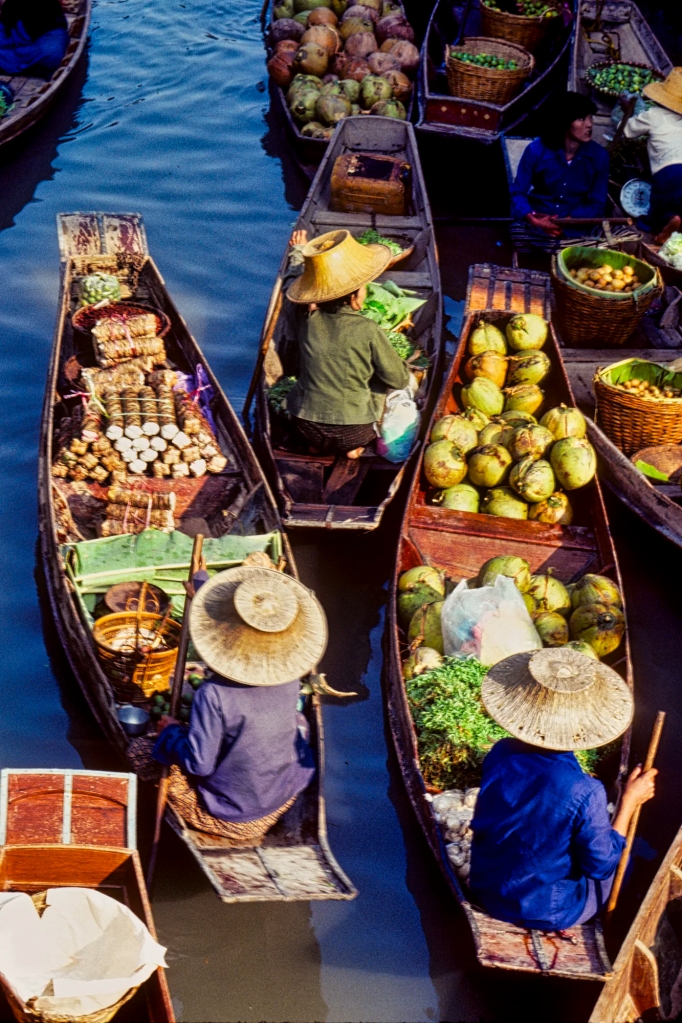
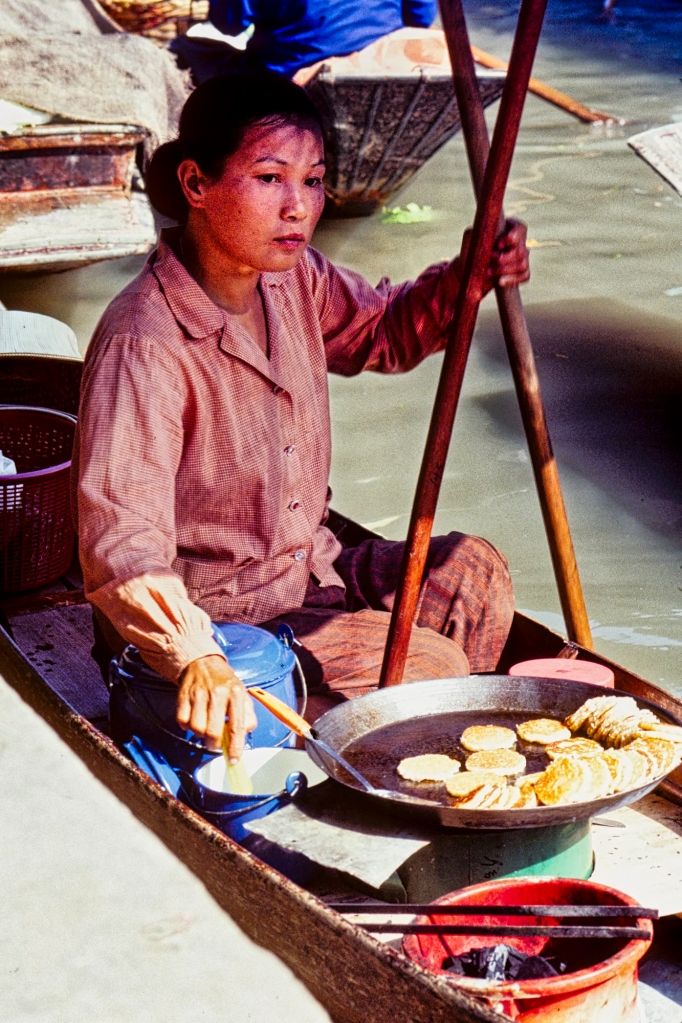
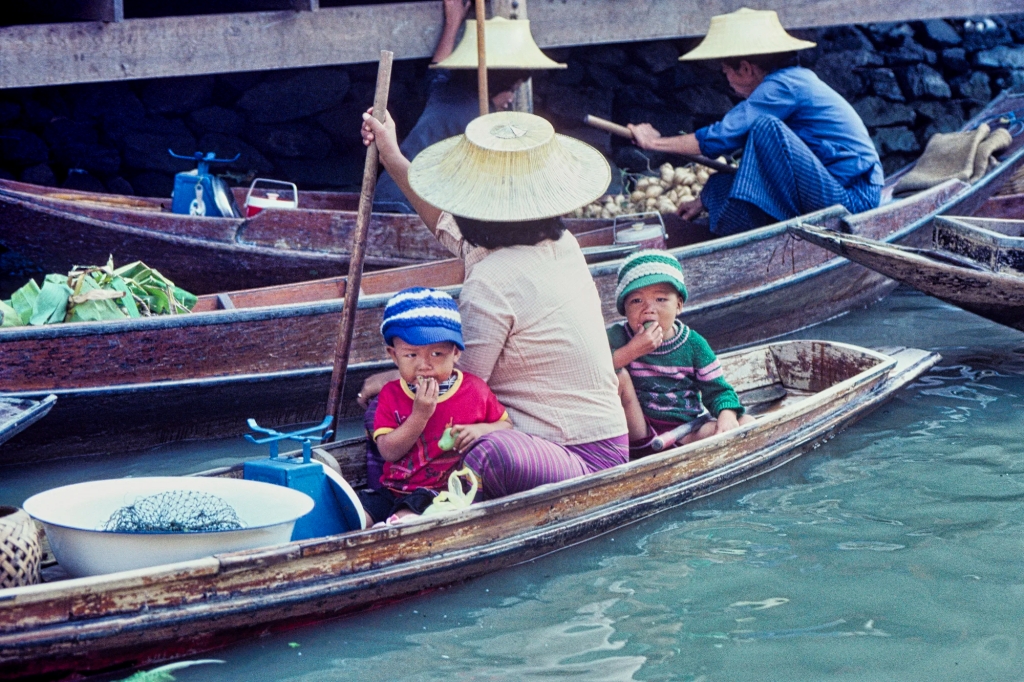
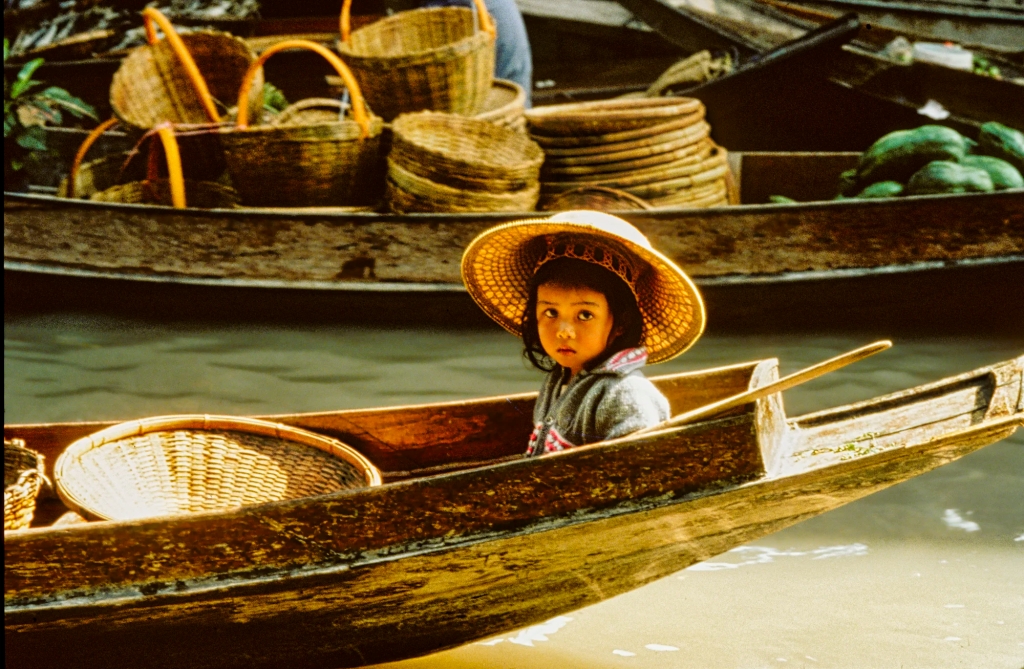
3 thoughts on “Bangkok – Become a Local Walk 4”